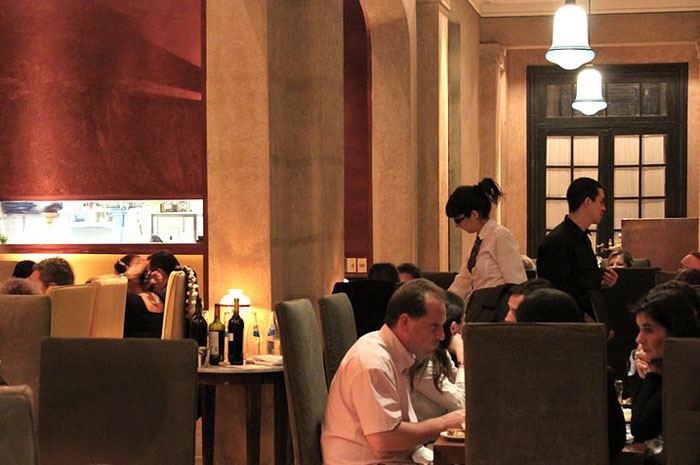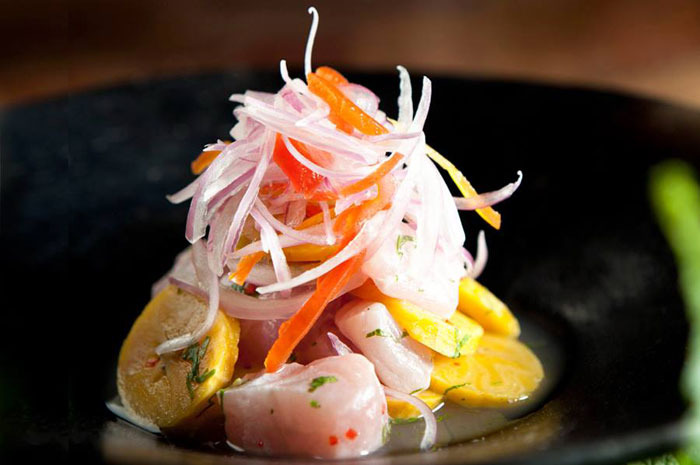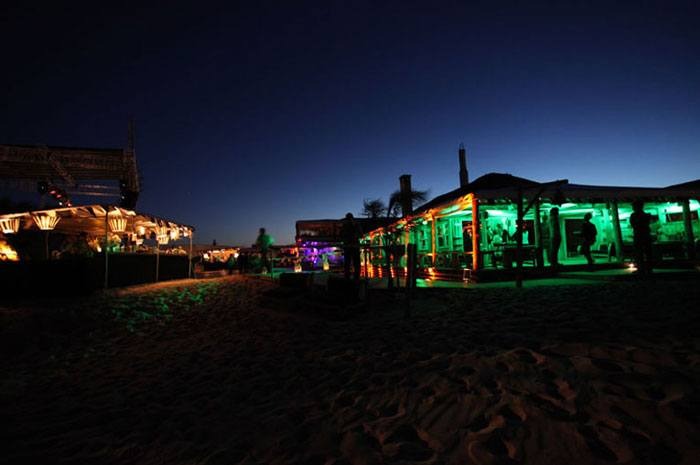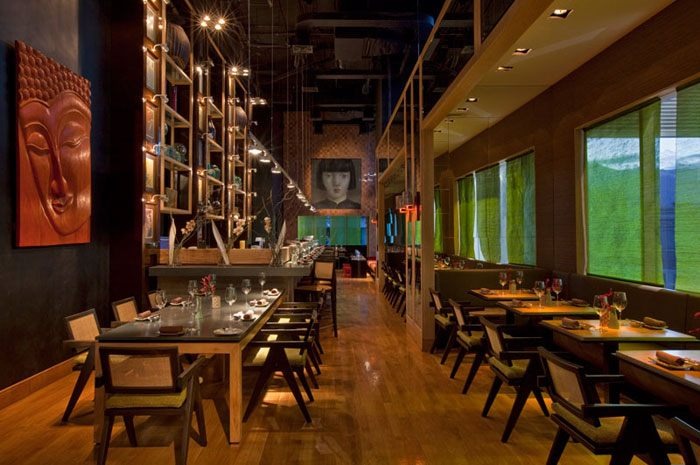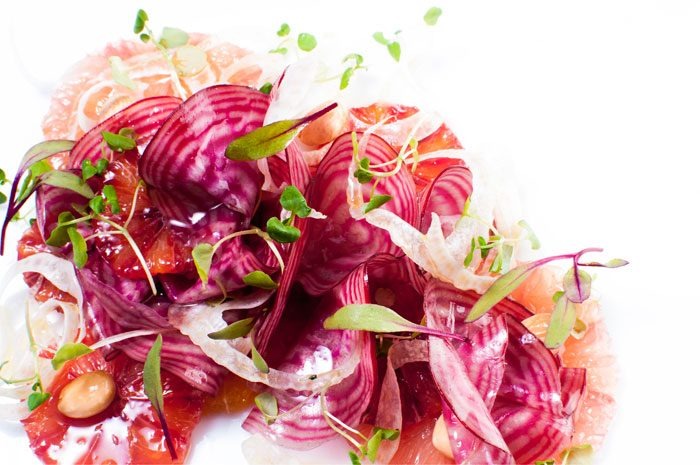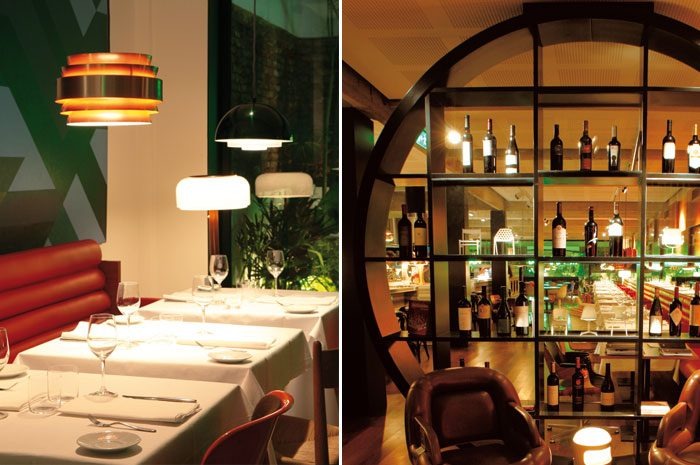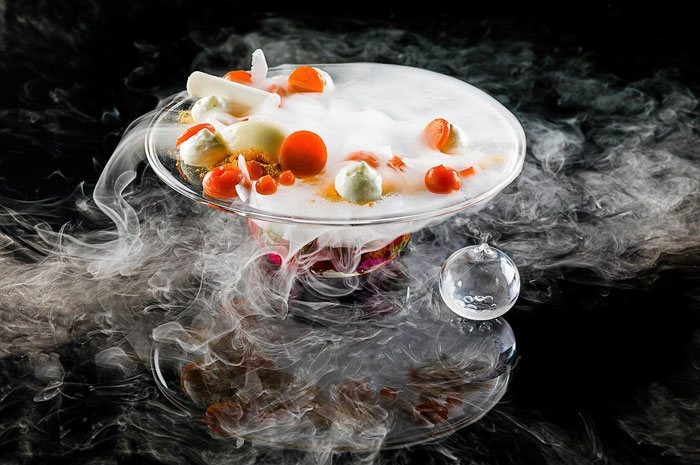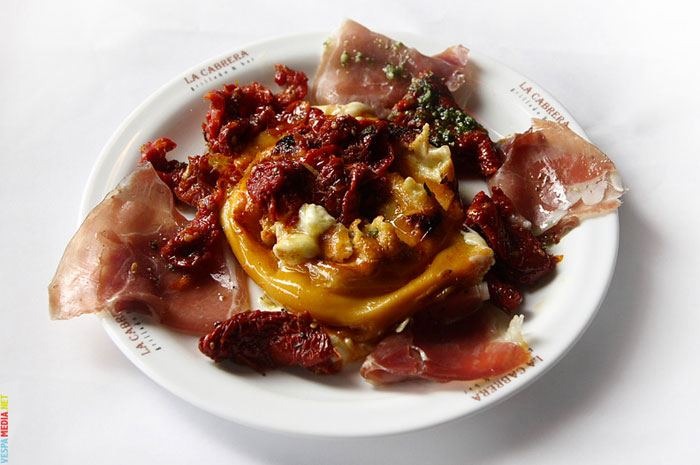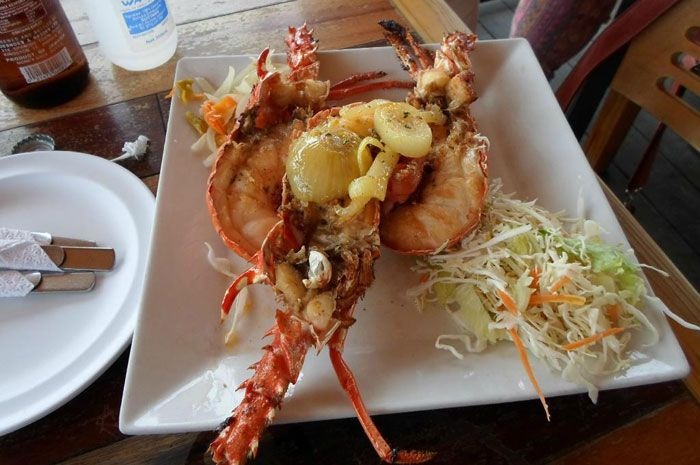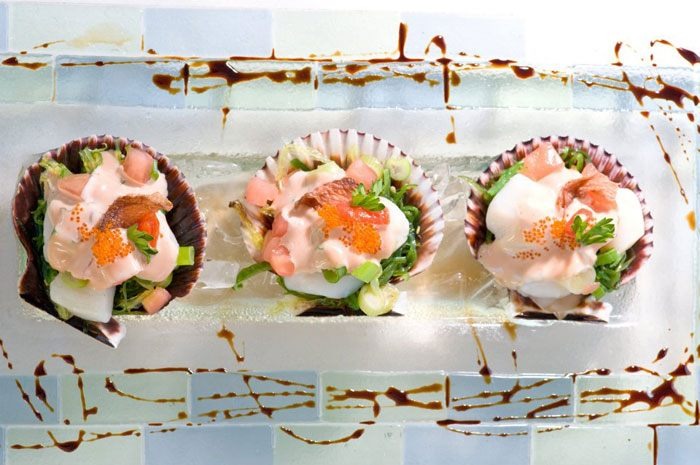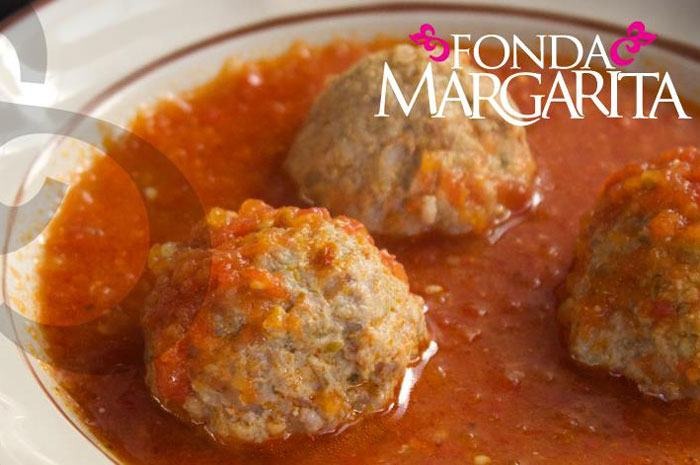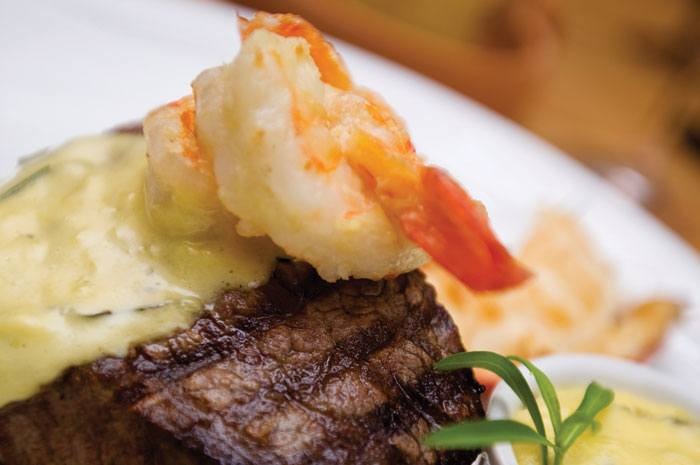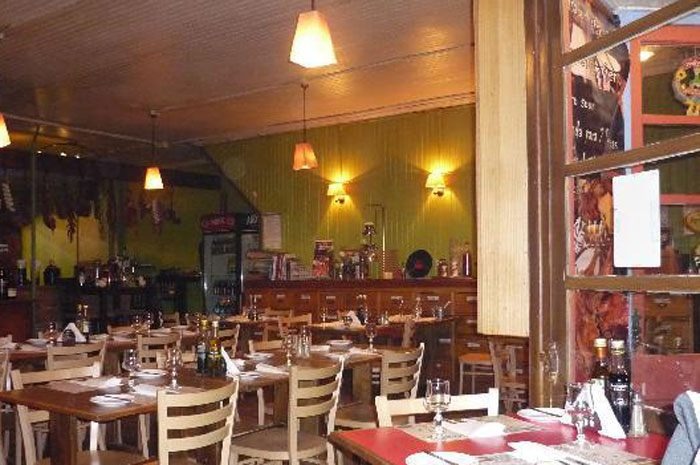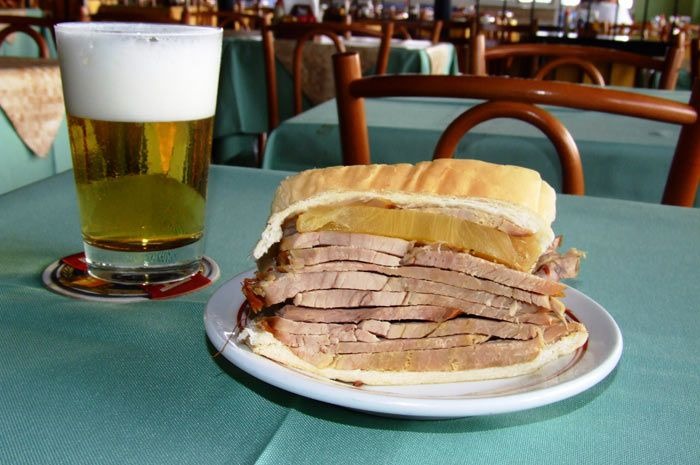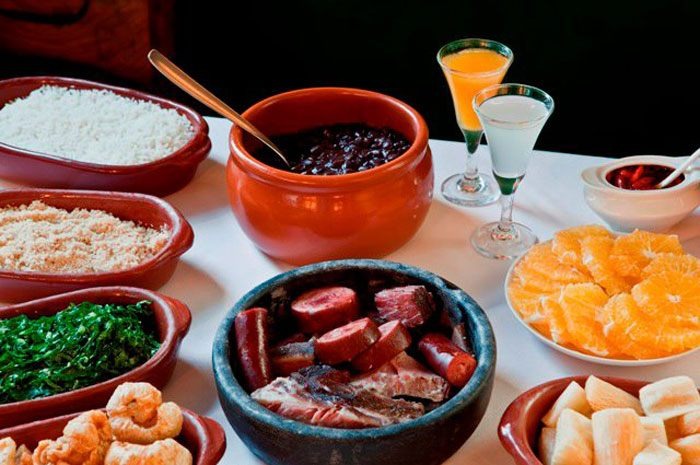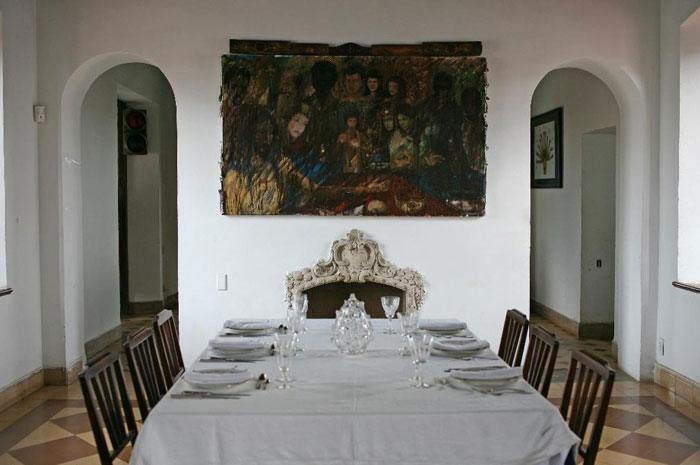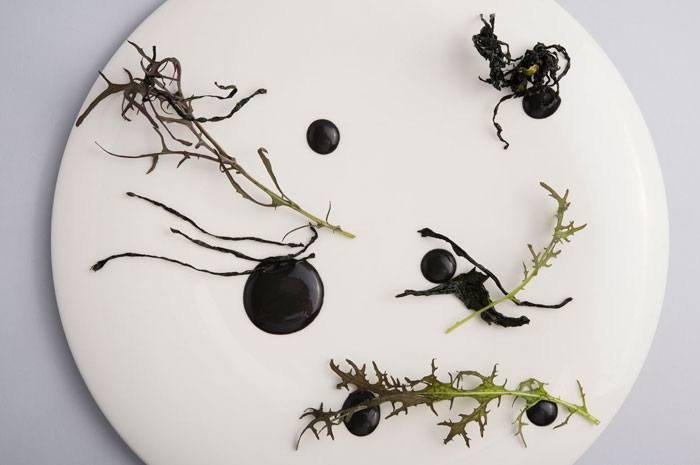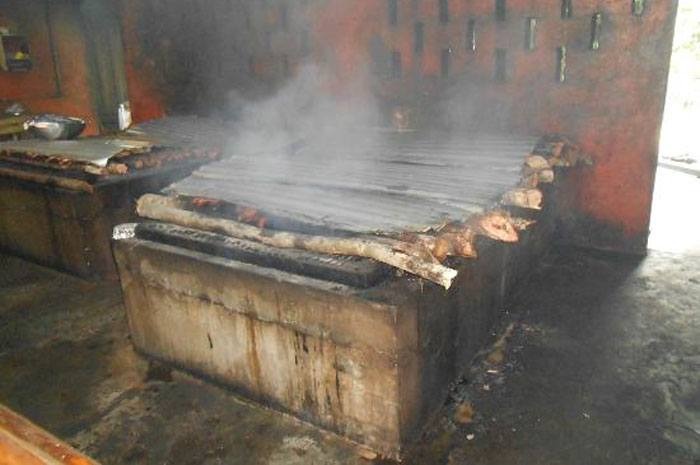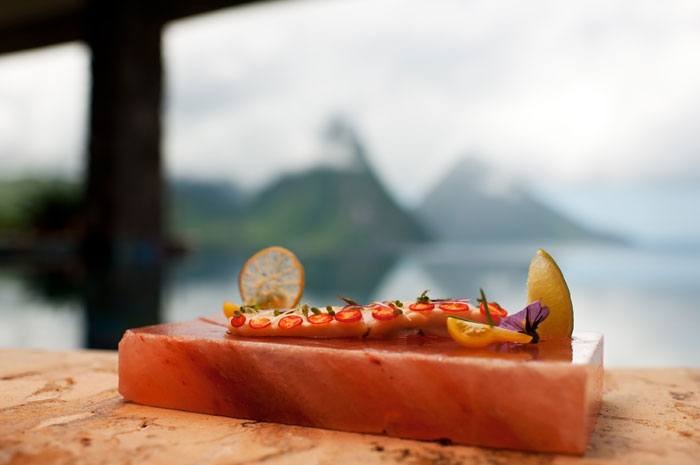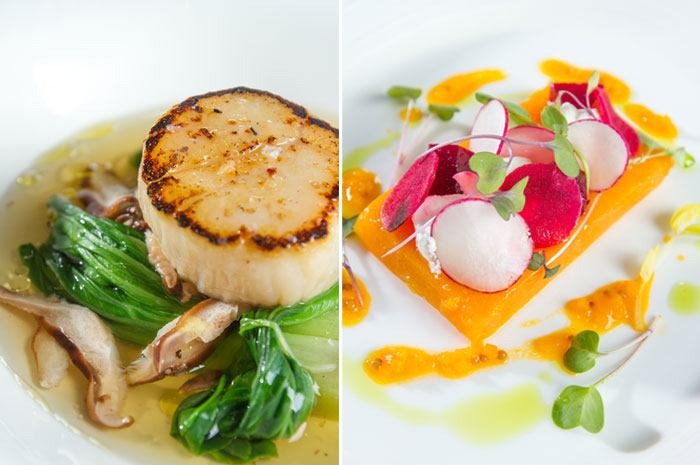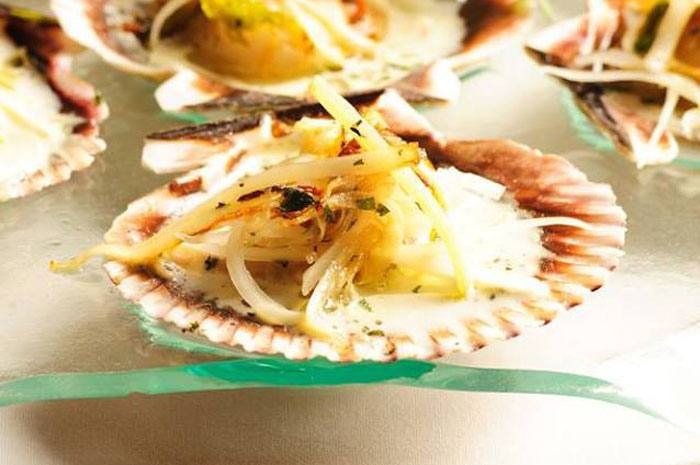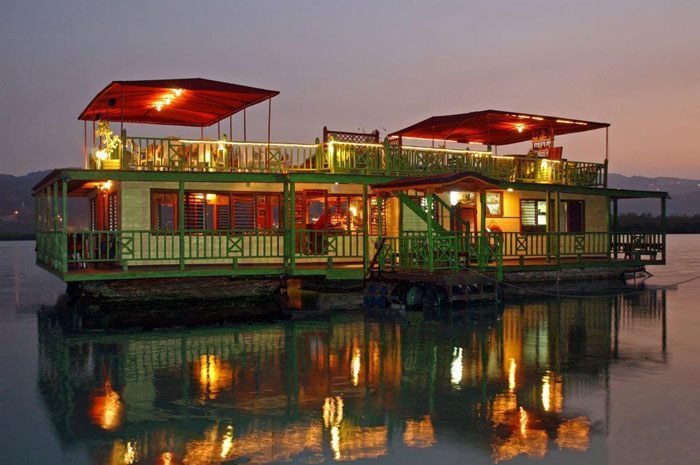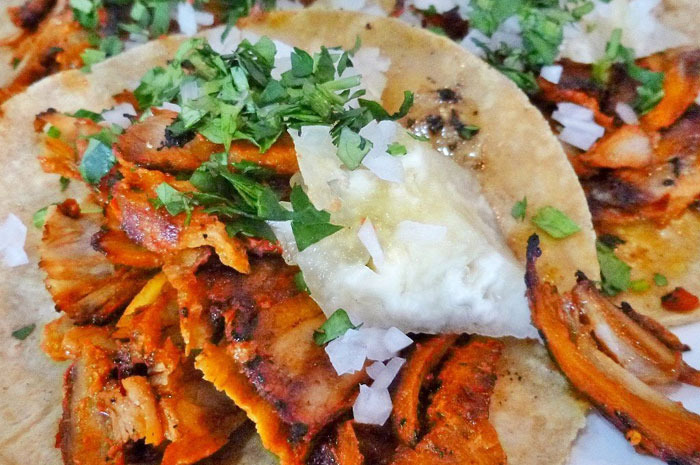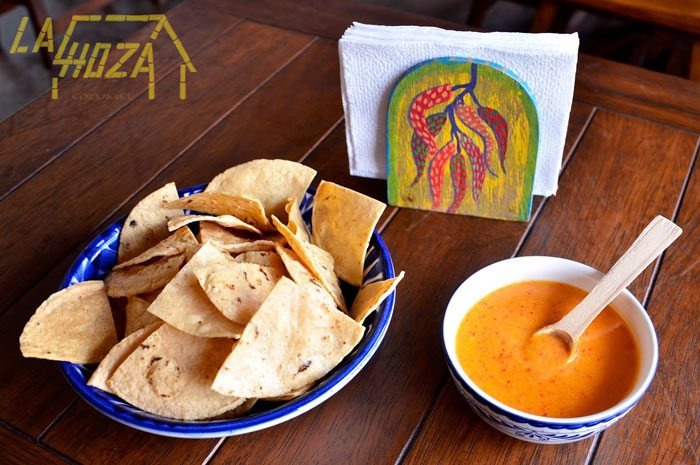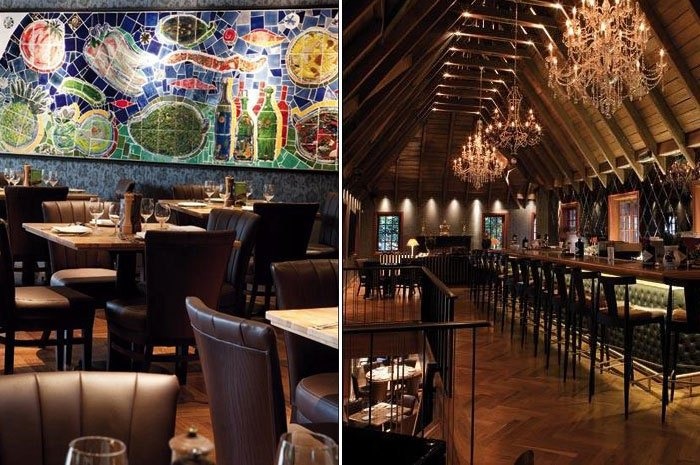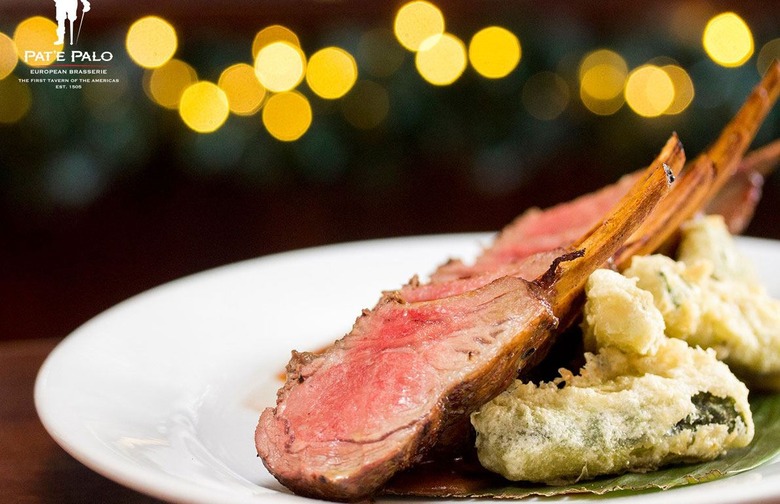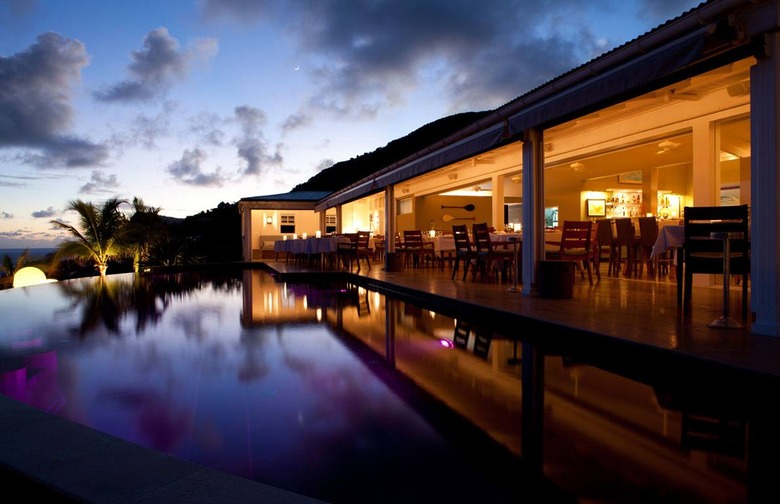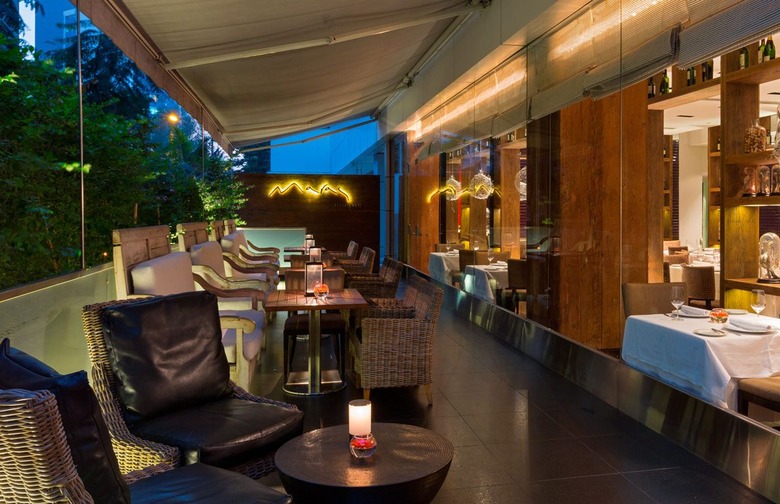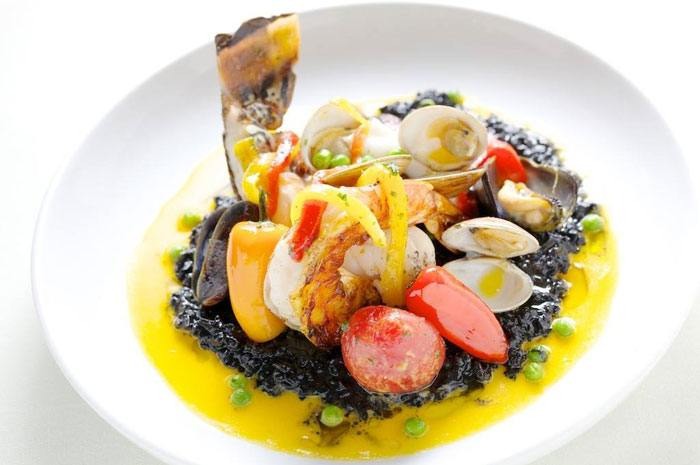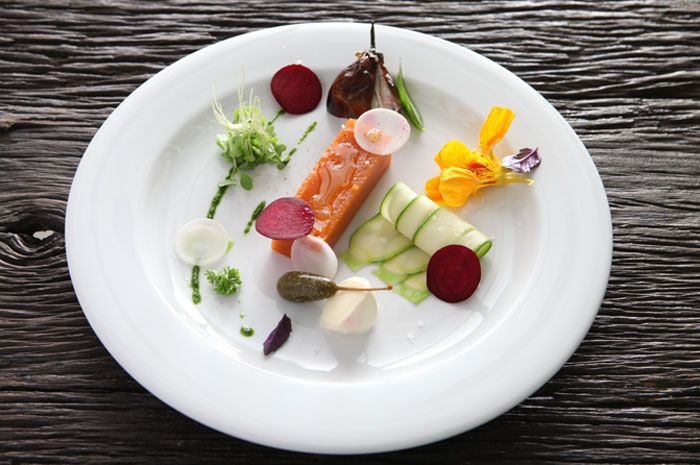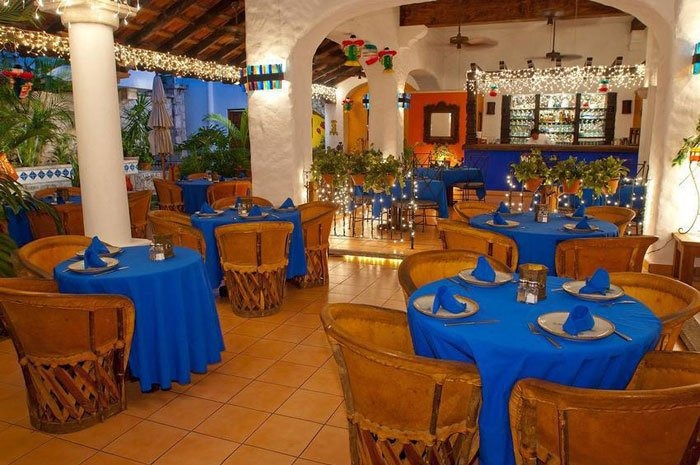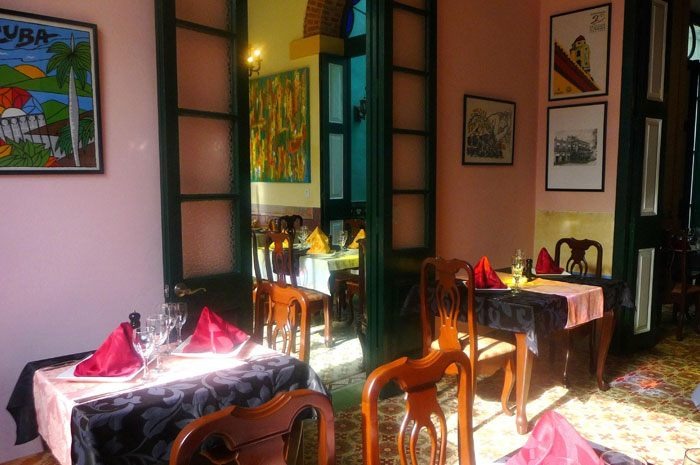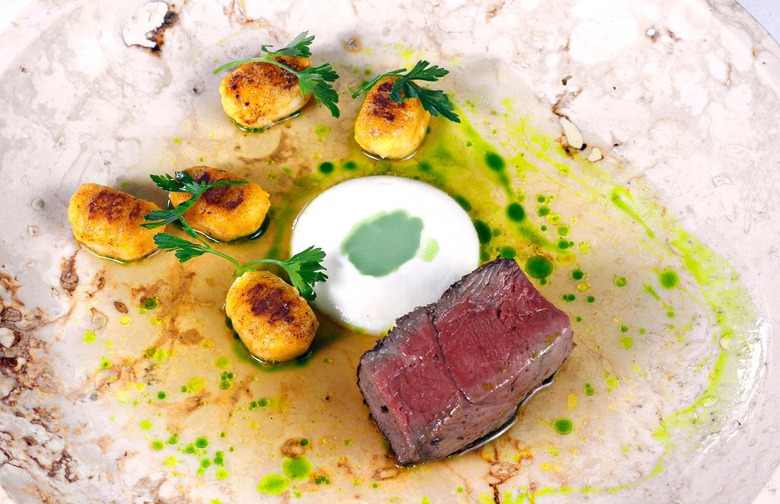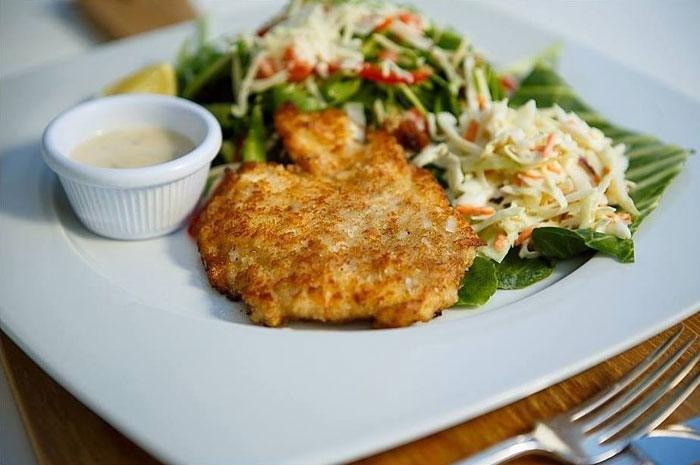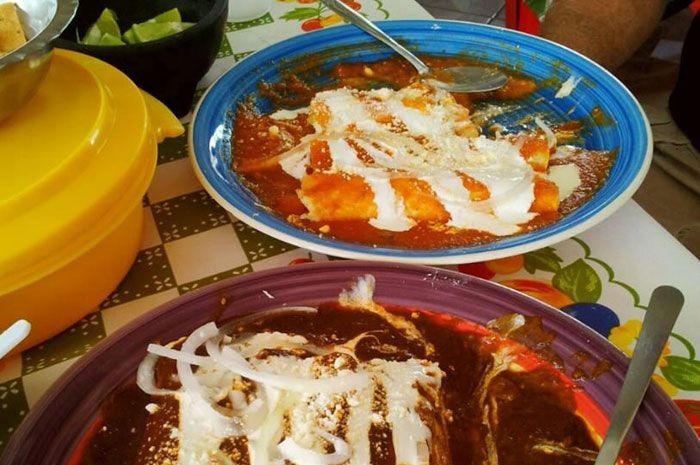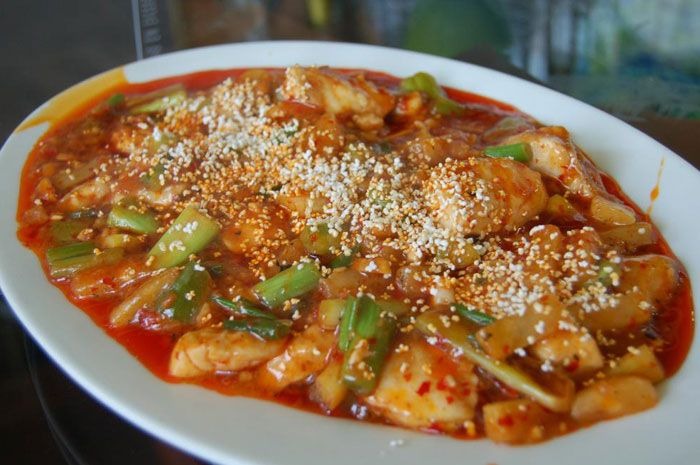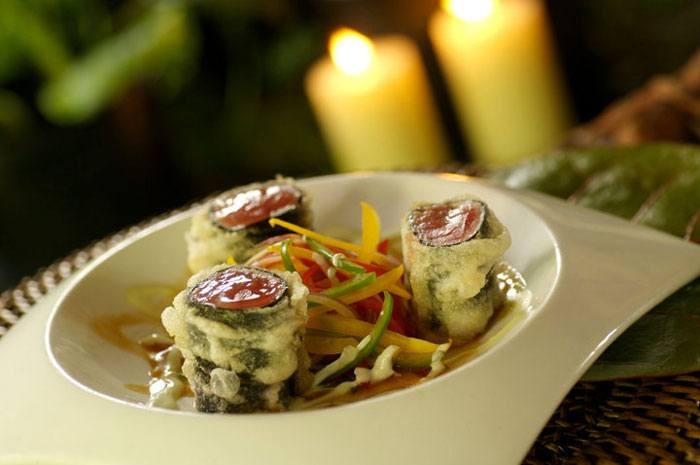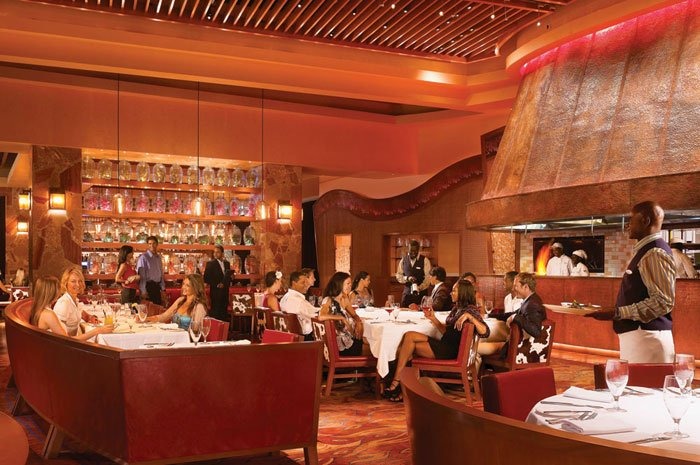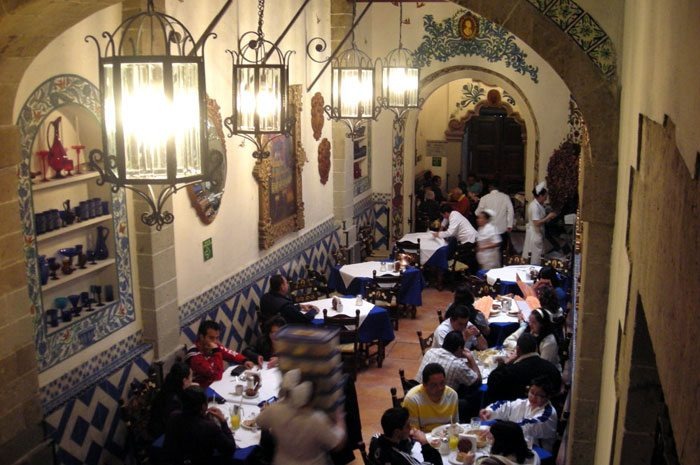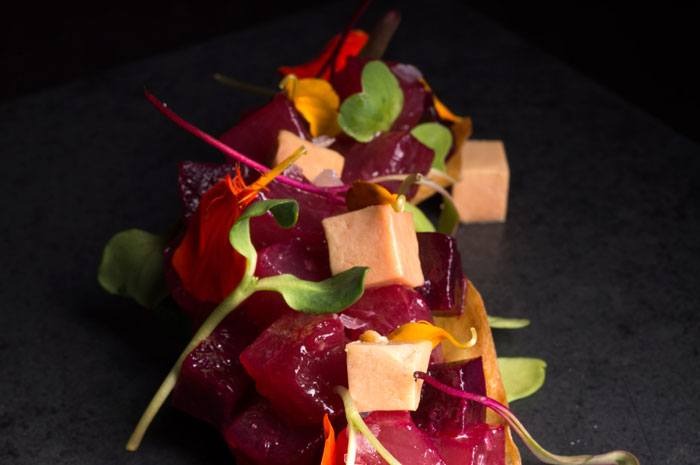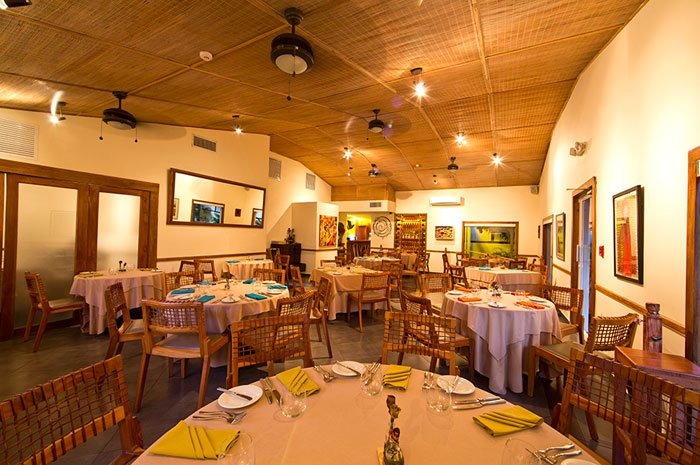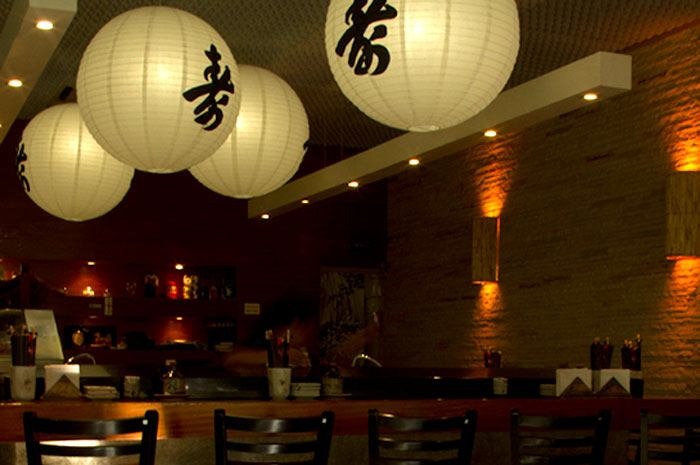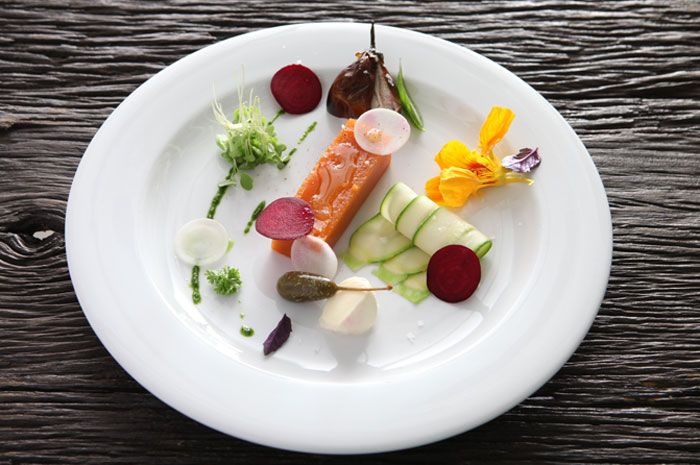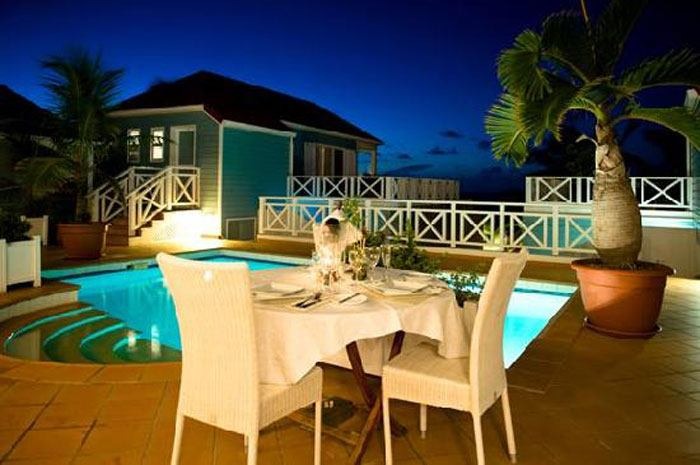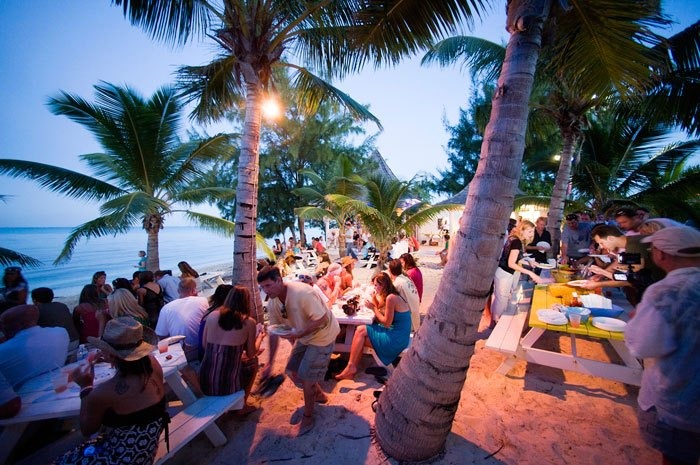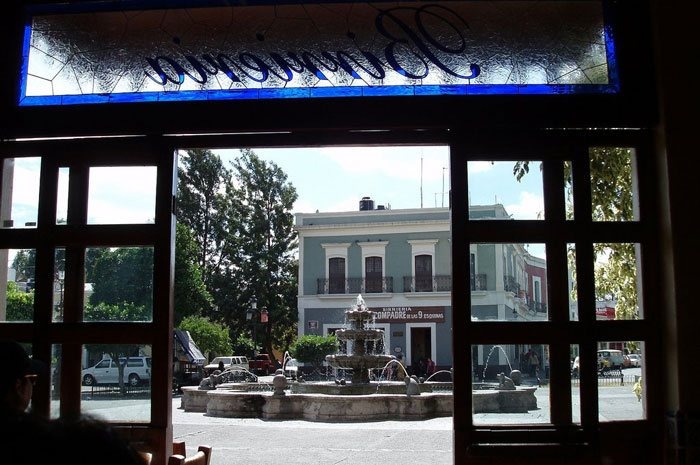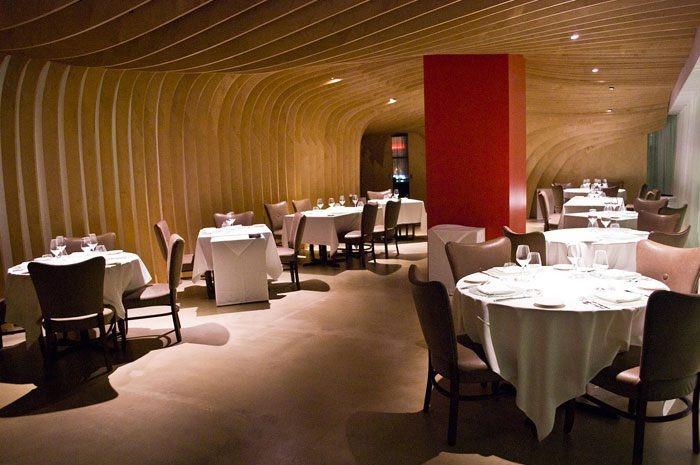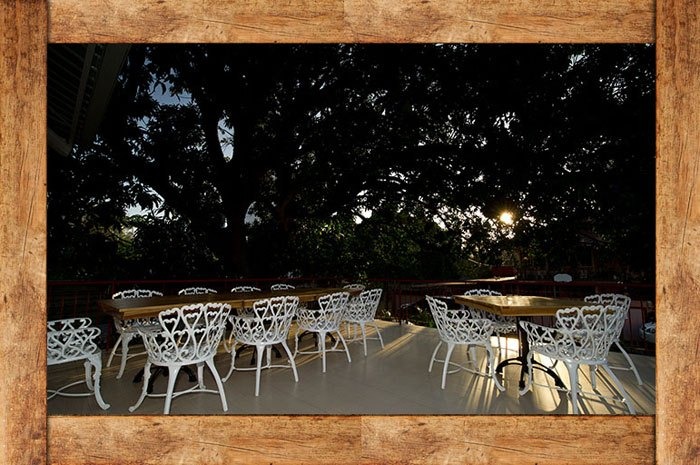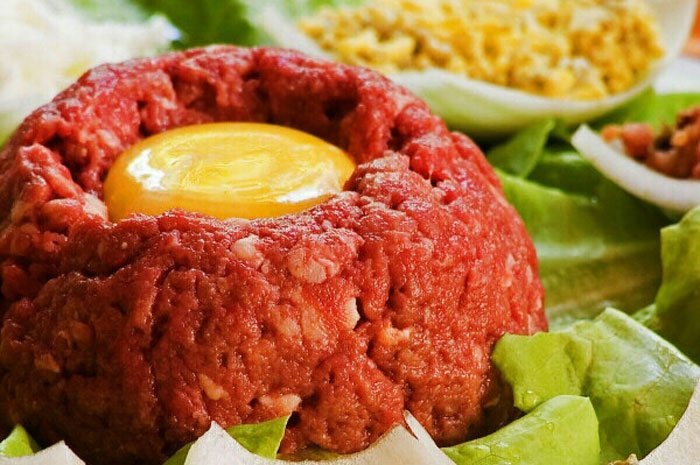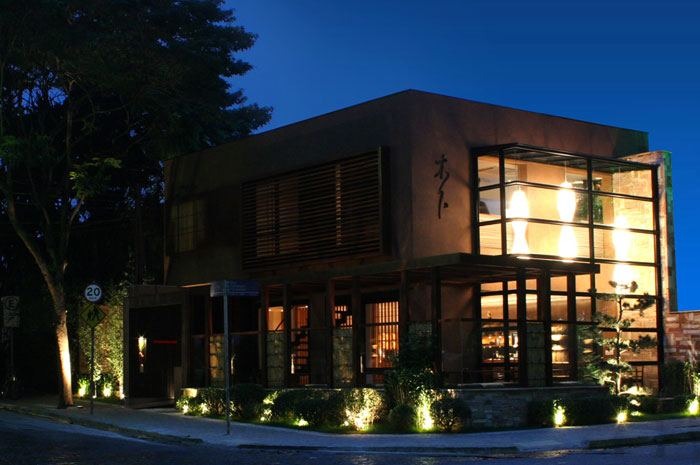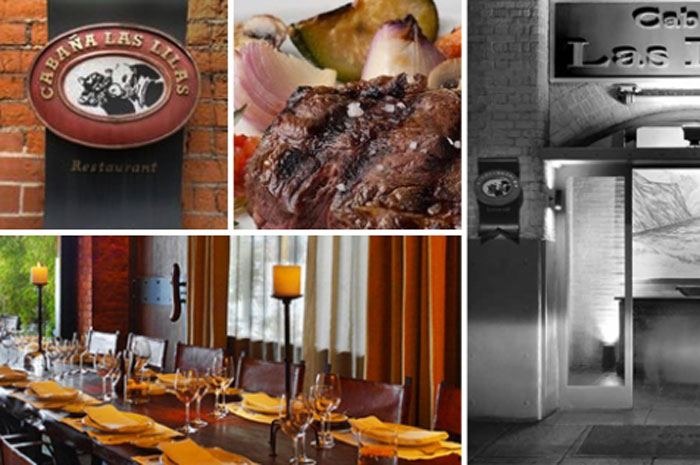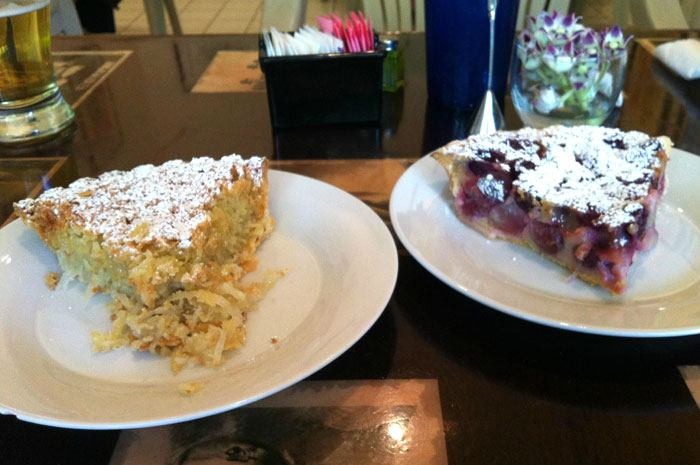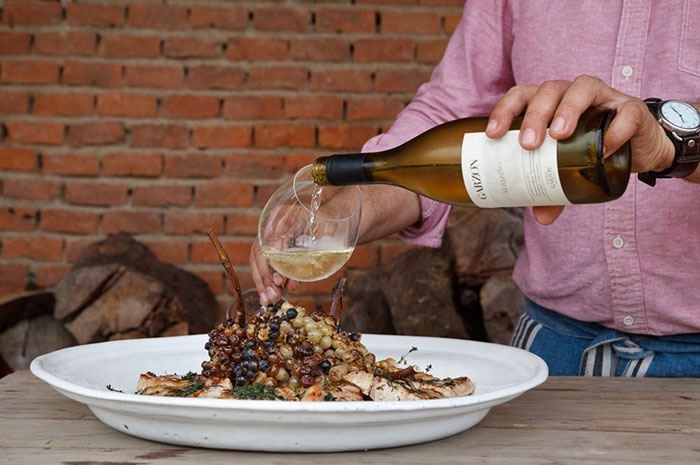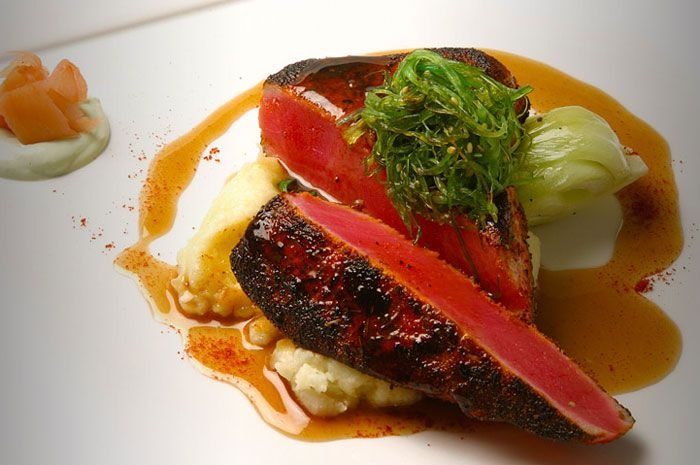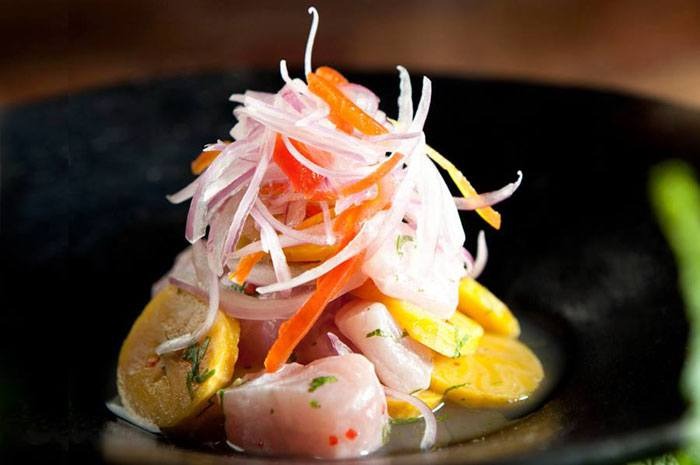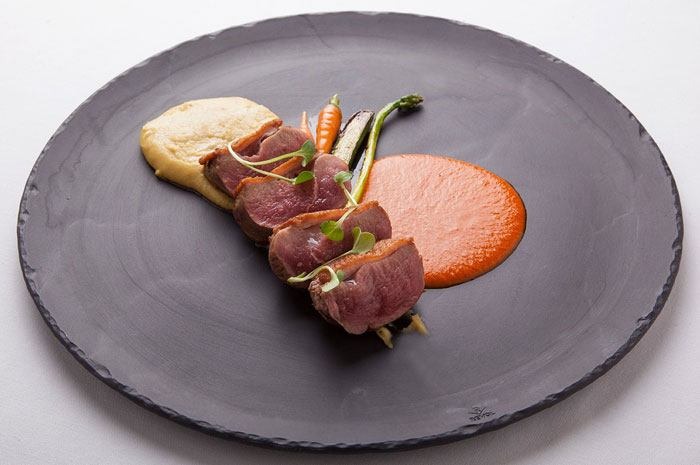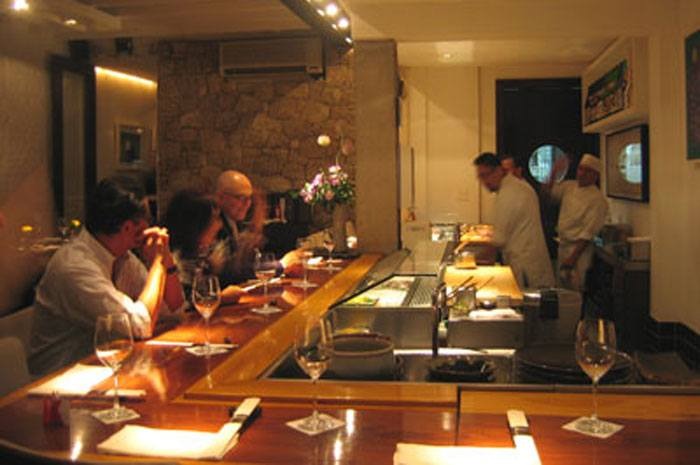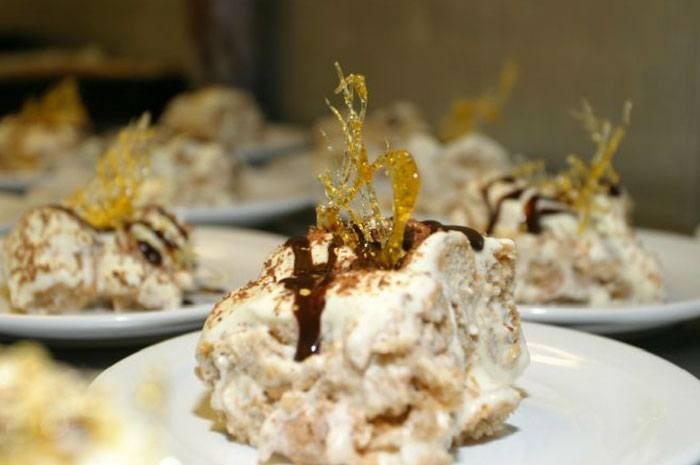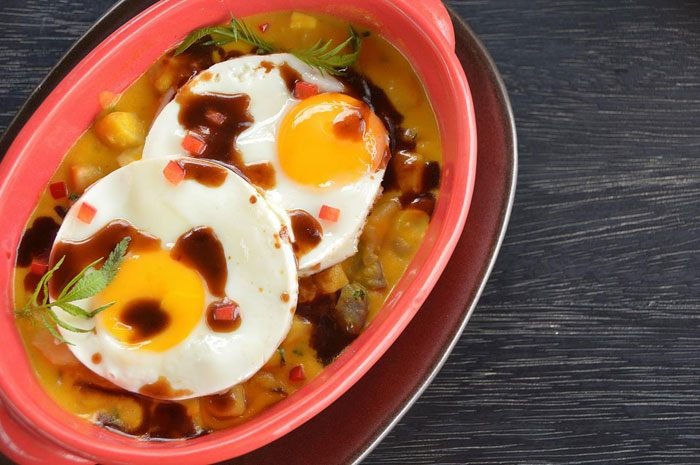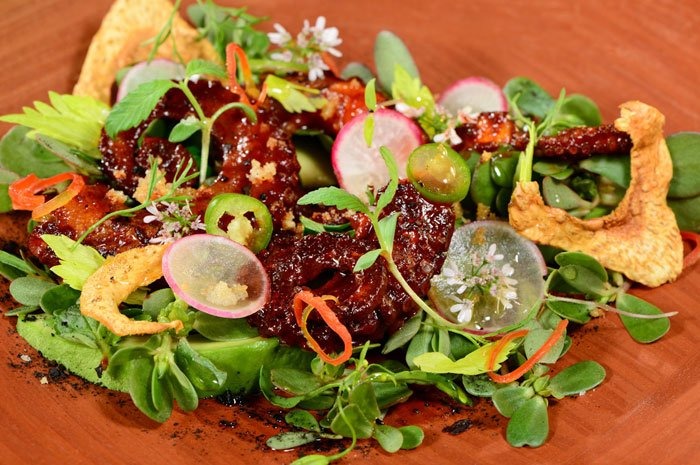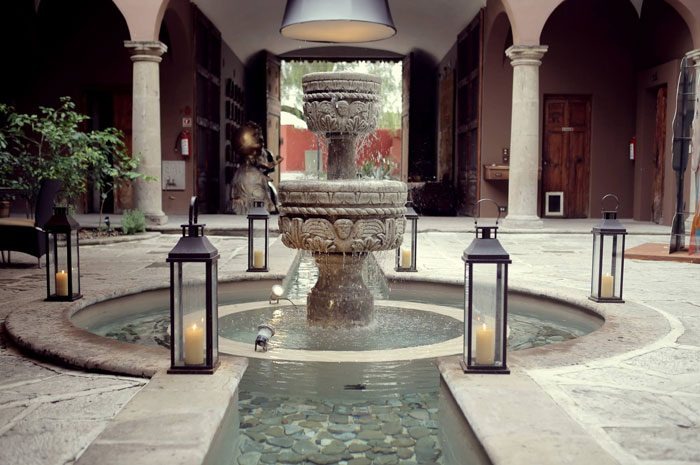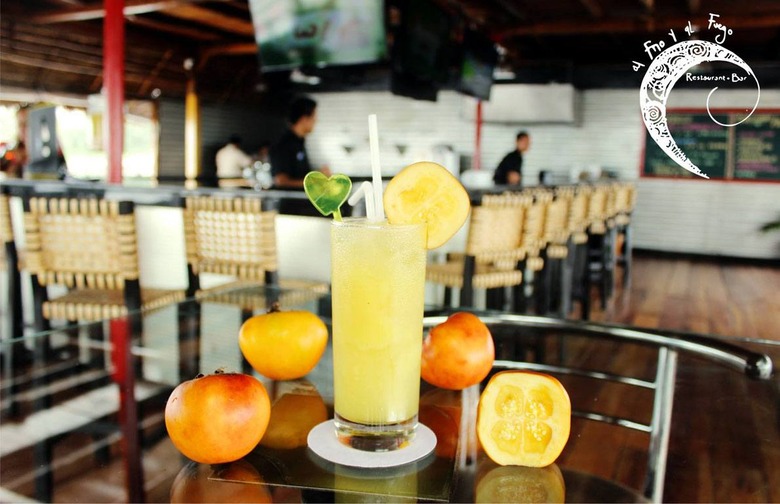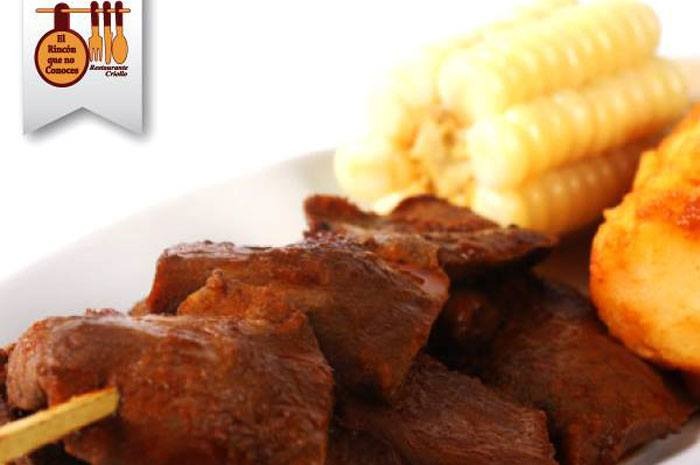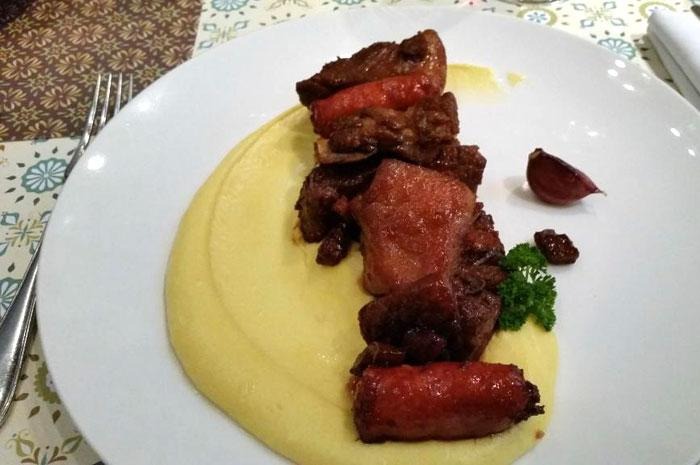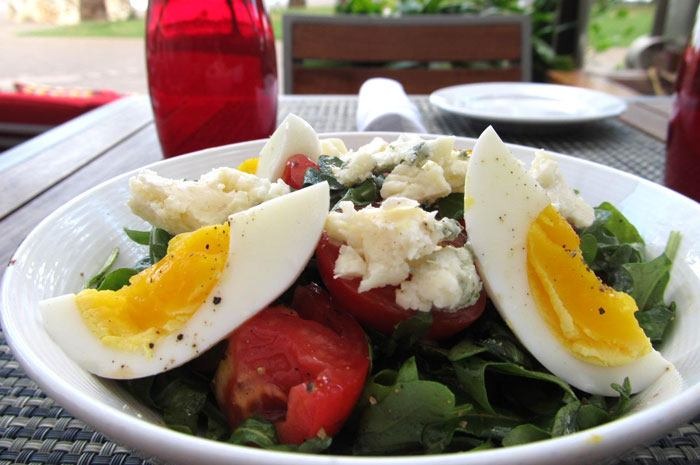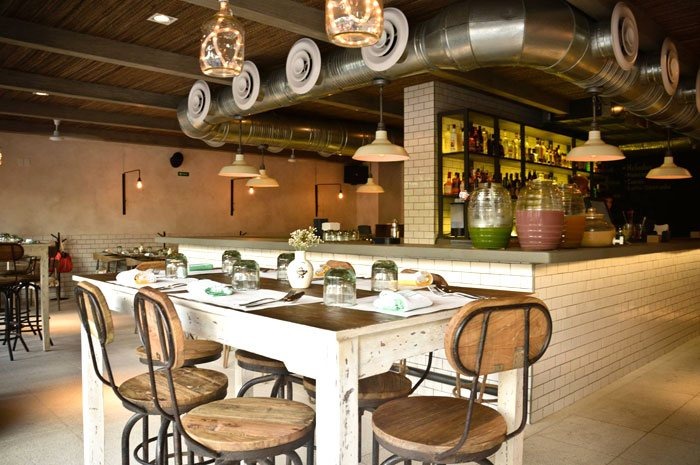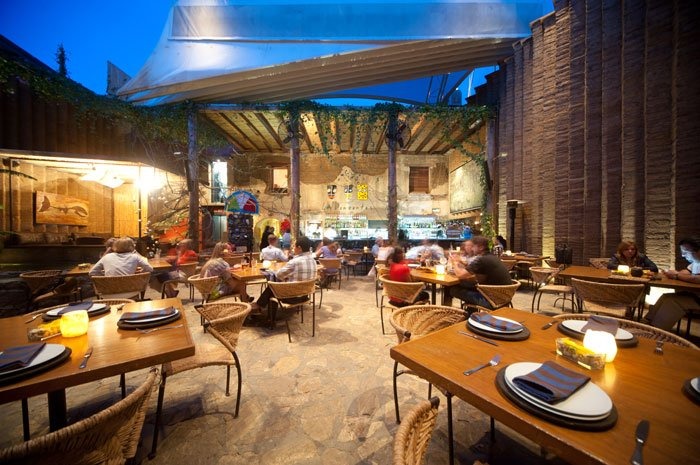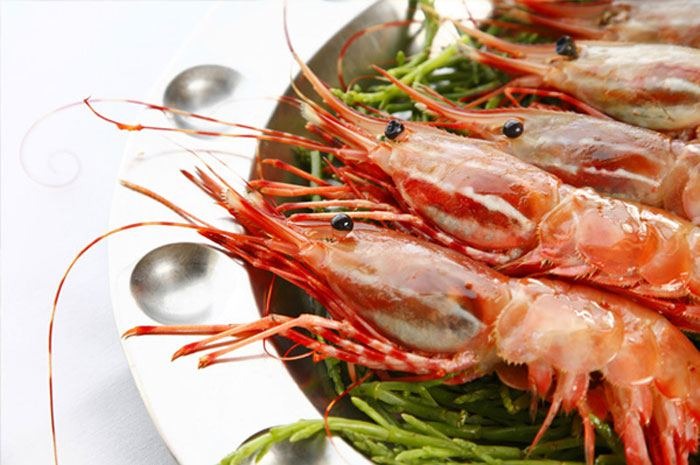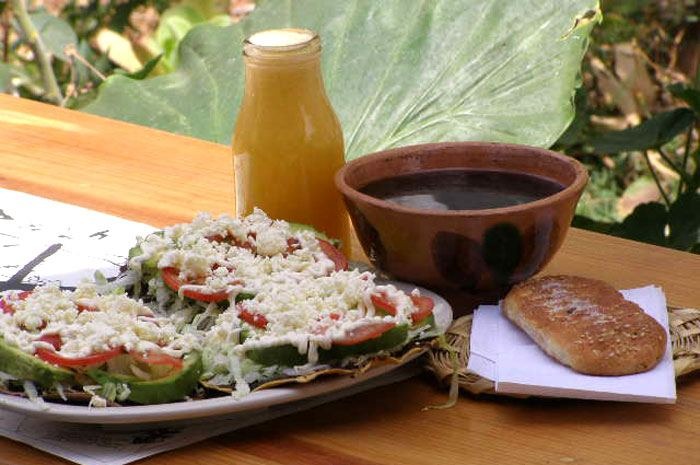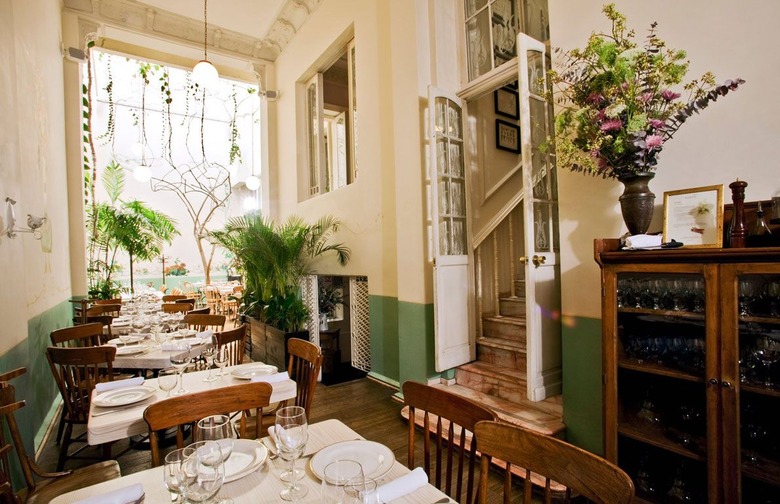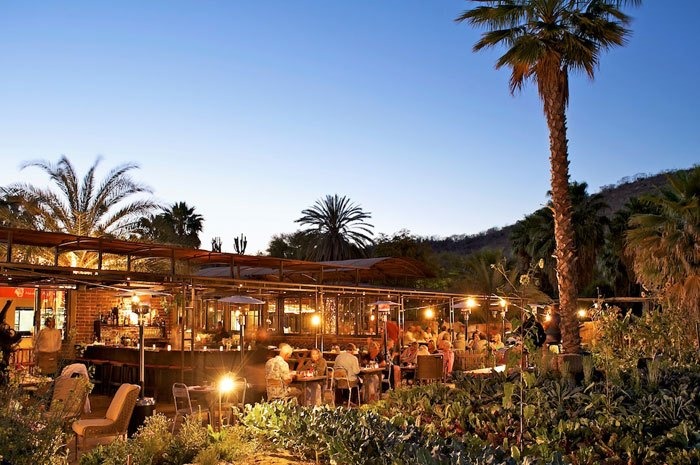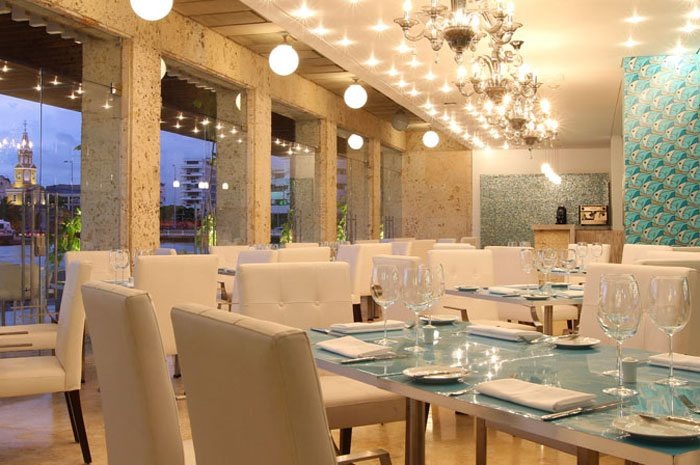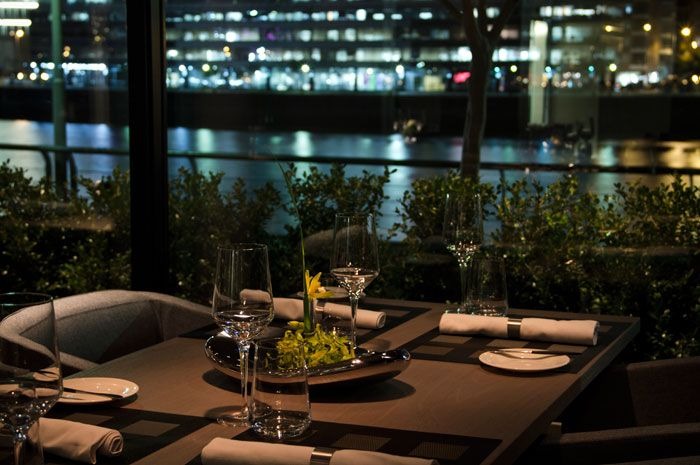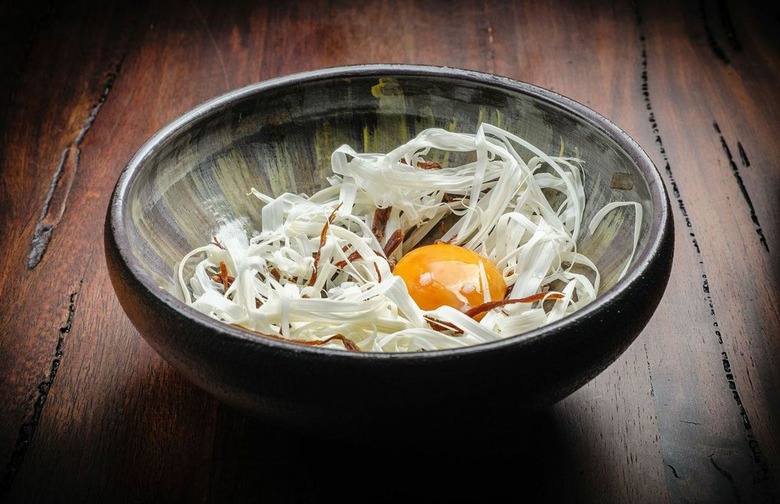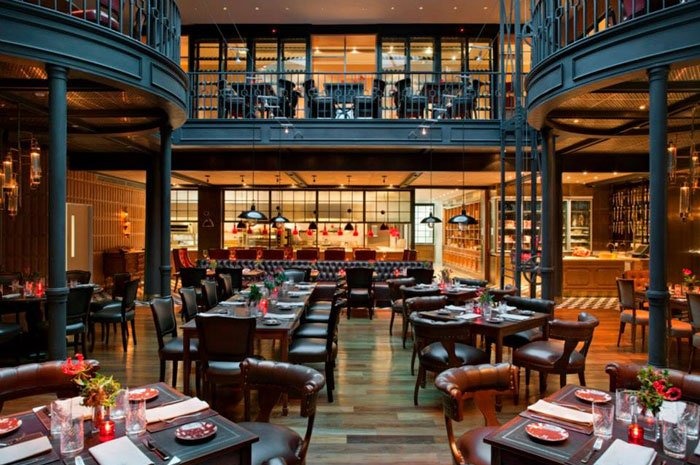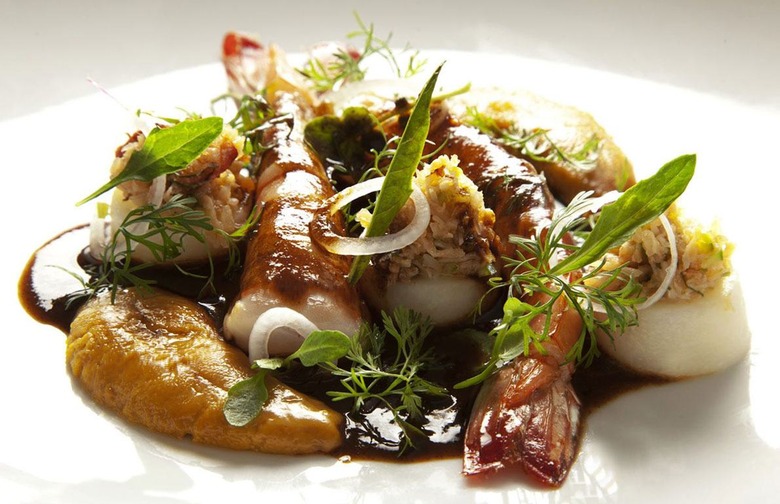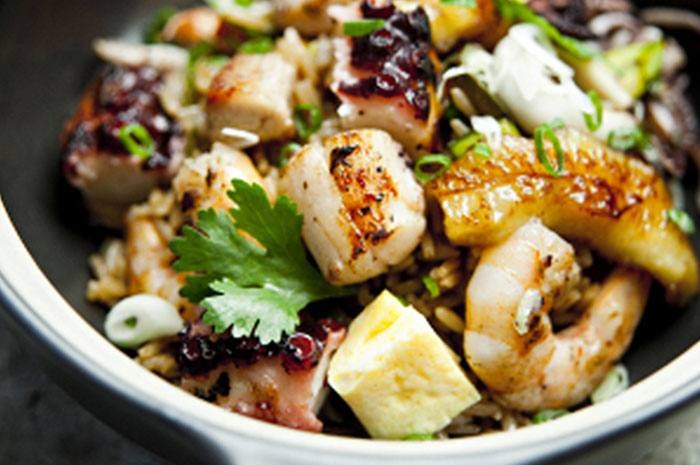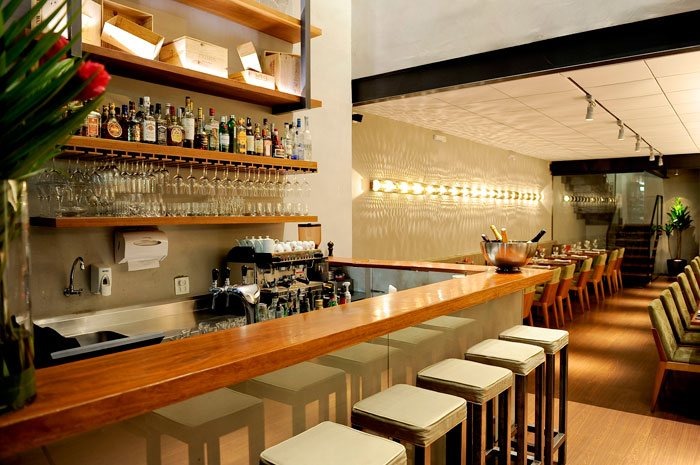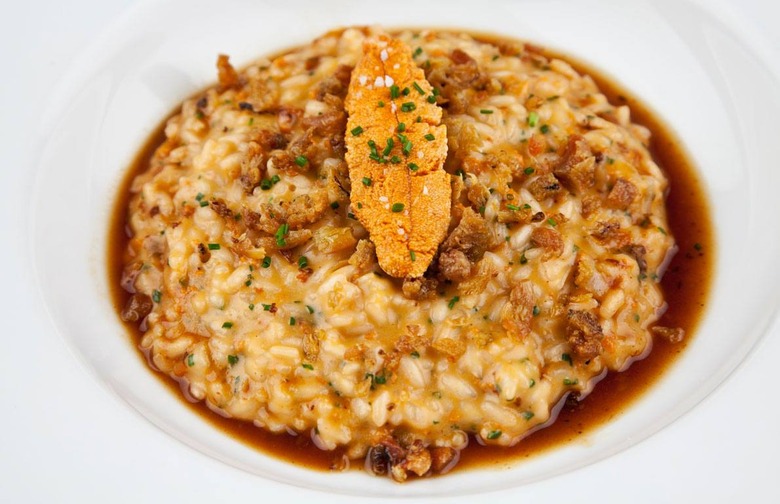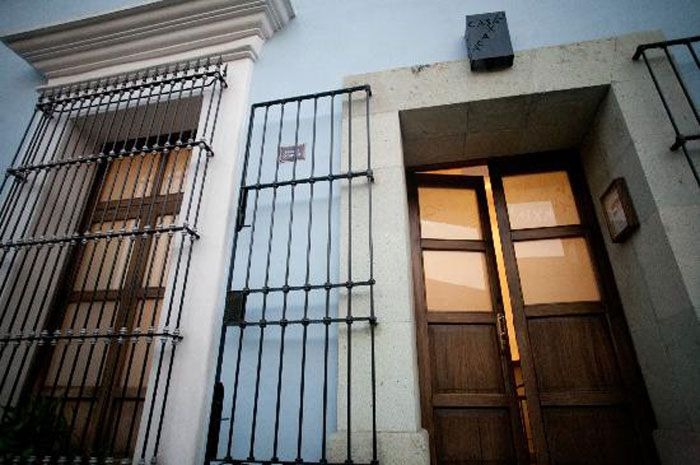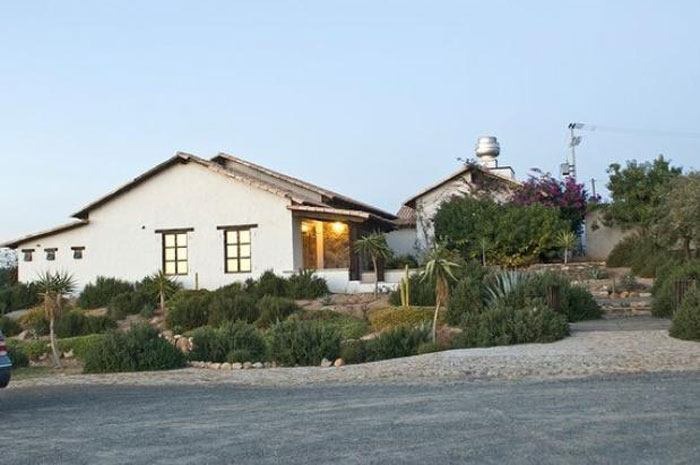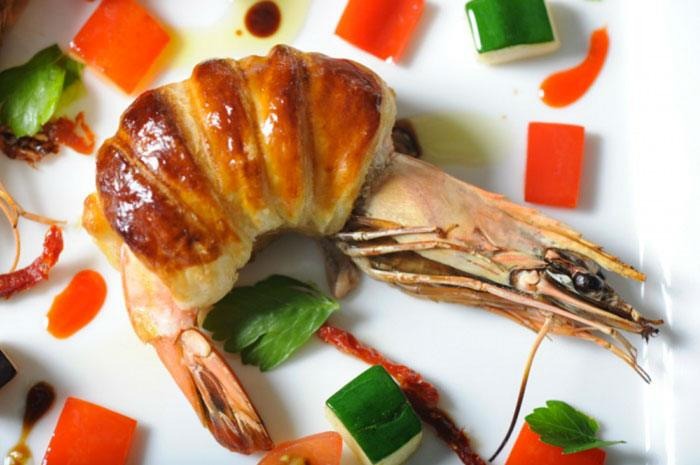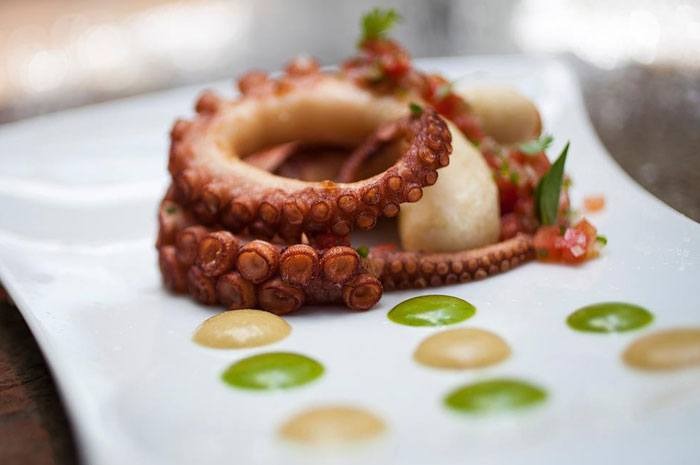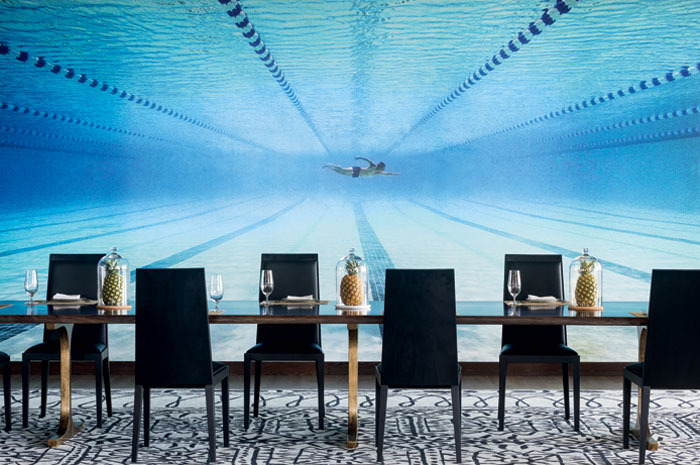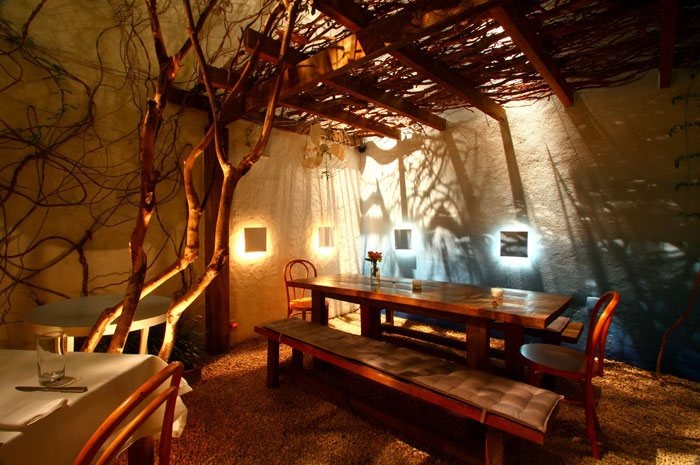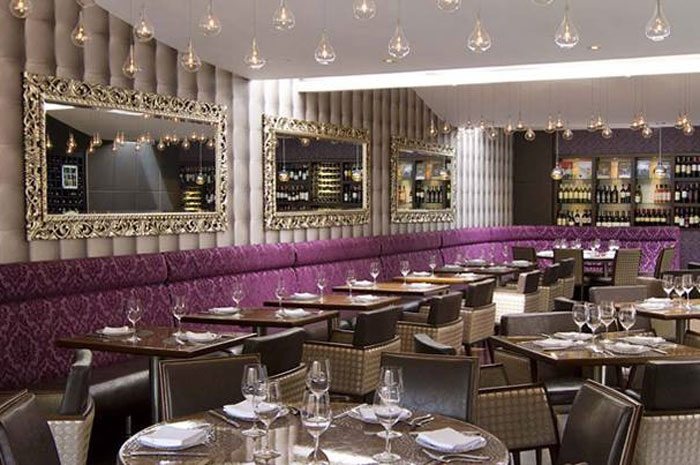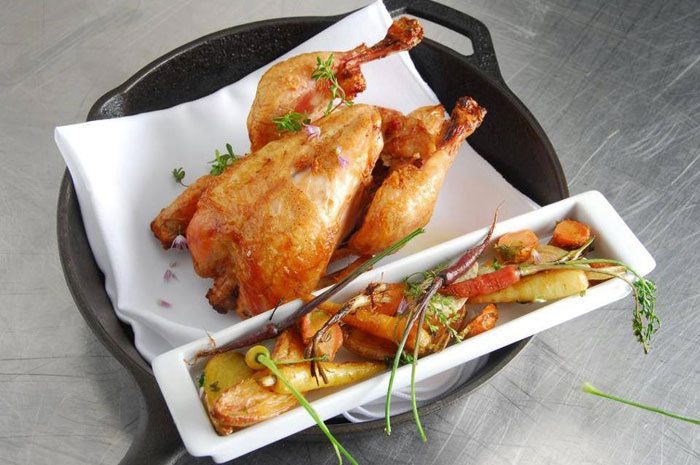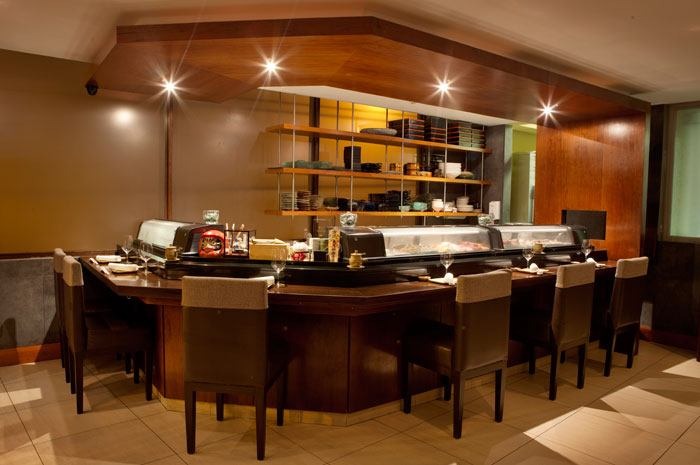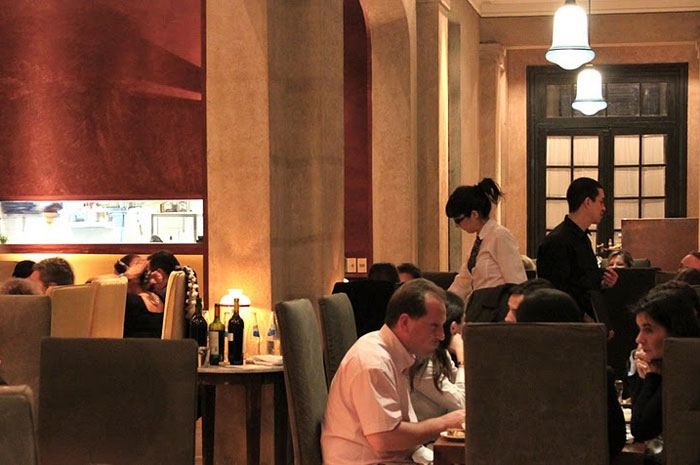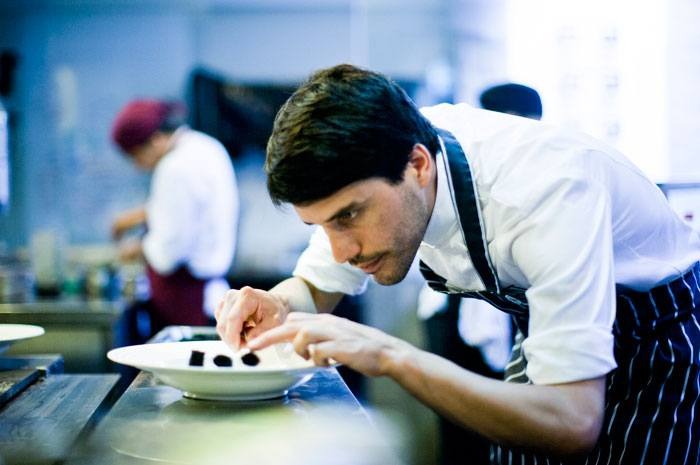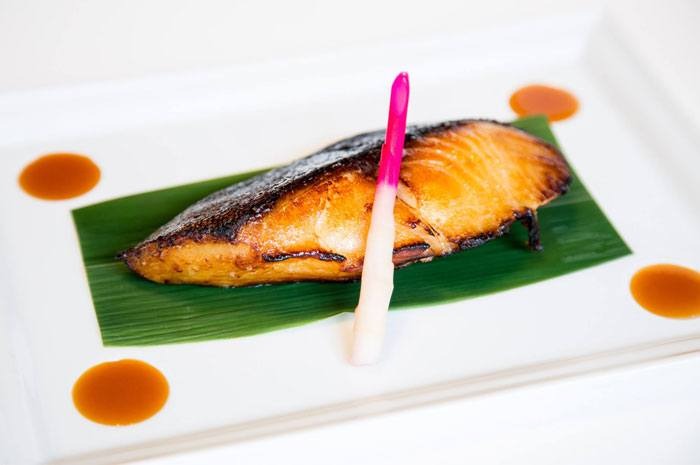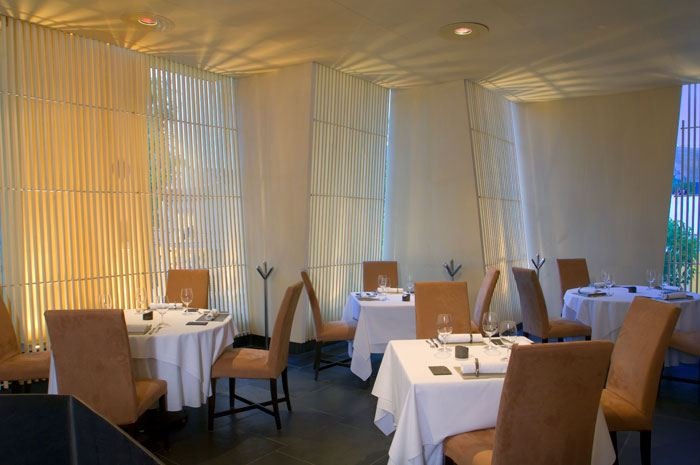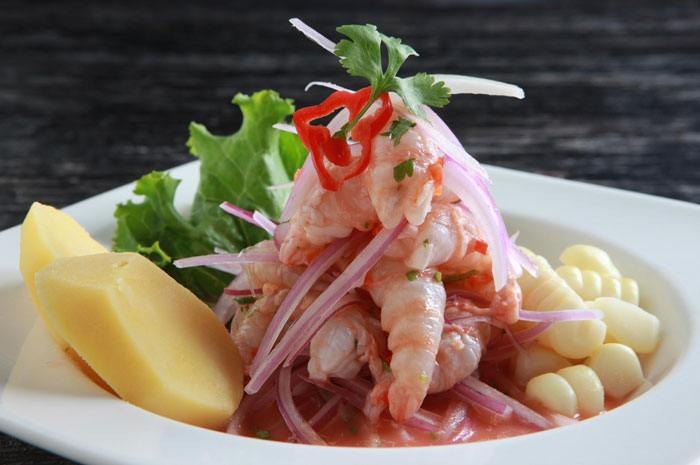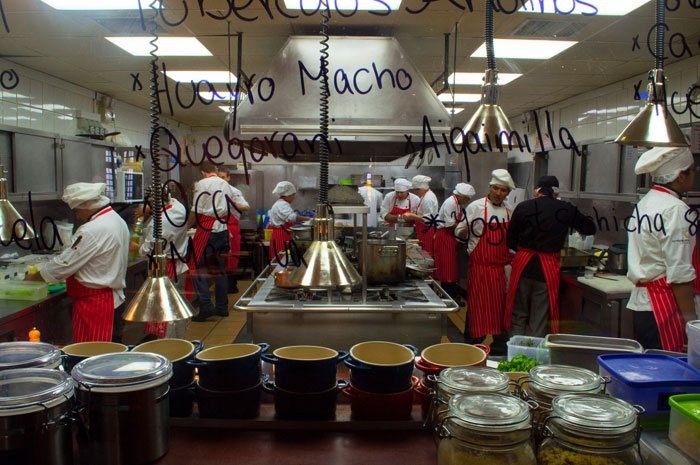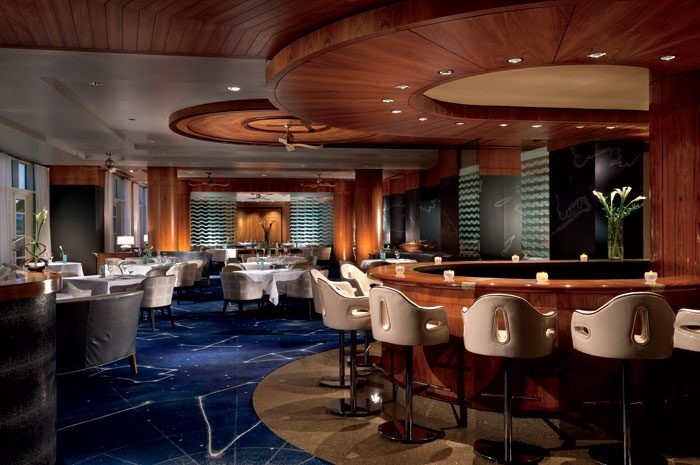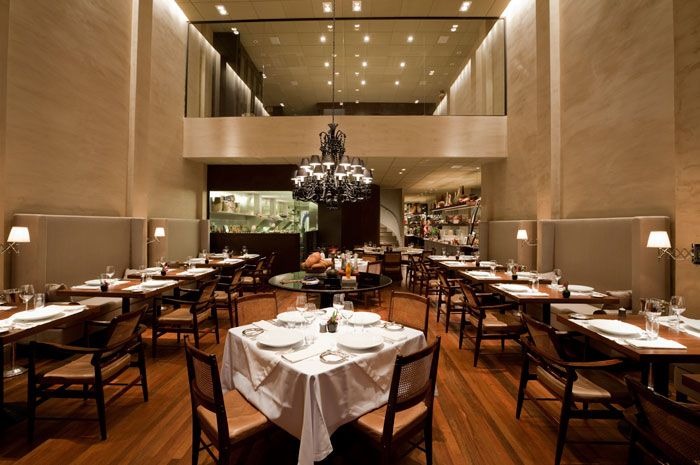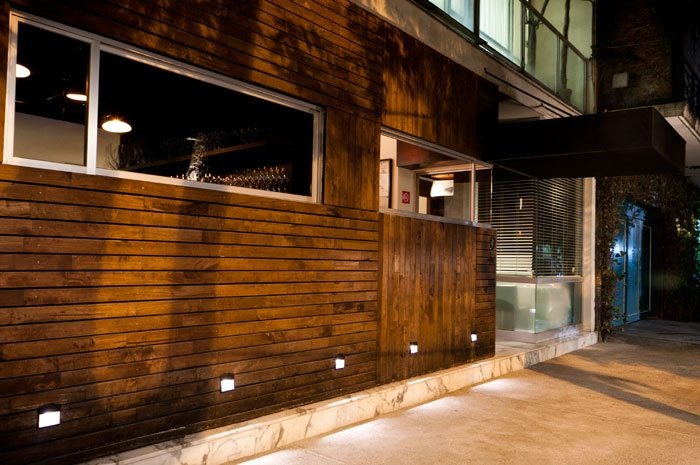101 Best Restaurants In Latin America And The Caribbean 2015
101 Best Restaurants in Latin America and the Caribbean 2015
The Daily Meal put together its third-annual list of the regions' finest epicurean endeavors.
#101 Parador La Huella (José Ignacio, Uruguay)
Looks can be deceiving at this shabby-chic beachfront thatched-roof retreat set amid the dunes of Playa Brava in southeastern Uruguay. Simple though it may appear, Parador La Huella (The Footprint Hostel) has been named to the Best Restaurants in Latin America, and chef Alejandro Morales has left an indelible mark (footprint?) on Uruguay's culinary scene, putting this once-sleepy fishing town on the map in the process. There's no pretentiousness here. "We're a parador, a simple beach restaurant with simple food," Morales says. The food may be simply prepared, but its pure, fresh flavors make La Huella a culinary treasure; the restaurant features such dishes as thinly sliced salmon with slivers of chilled local leaves; flame-grilled whole corvina with butter, olive oil, and garlic; and straightforward grilled shrimp. You must top off your meal with the molten dulce de leche cake. The freshly baked bread is made with a recipe from San Francisco's Tartine Bakery and the restaurant sources its produce from a nearby organic farm. No matter what you order, it all goes well with clericó (a fruit punch drink similar to sangria).
#100 Osaka (Lima)
Since opening its doors in 2002 in central Lima, Osaka has expanded to five more locations, another one in Lima, two in Buenos Aires, one in São Paulo, and one in Santiago, Chile. We prefer the original, though apart from slight variations can be found in the décor and menu at each location, but the basic theme at each remains the same: modern Nikkei cuisine, the century-old fusion of Japanese and Peruvian food which began in Lima decades ago. The restaurant features a massive sushi bar in one corner and two tatami rooms. Tuck into ceviches, tiraditos (carpaccio-like raw fish with spicy sauce), and sushi rolls, and fall in love with Osaka.
#99 Marmalade Restaurant & Wine Bar (San Juan, Puerto Rico)
After more than 20 years of working around the world, Iowa-born chef Peter Schintler — whose résumé a stint at Le Cirque in New York City and apprenticeships with Gordon Ramsey and Raymond Blanc — moved to San Juan, where he brings excitement and flair to the city's dining scene with Marmalade Restaurant & Wine Bar. Located in the Old San Juan, Marmalade focuses on supporting small local farmers and producers and utilizing organic ingredients when possible. The menu features European-influenced dishes based on Puerto Rican ingredients. There are two menu options: à la carte or a four- or six-course prix fixe menu, both of which are constantly evolving. Past dishes have included horseradish-potato gnocchi served with short ribs and wilted greens, white bean soup, halibut-and-prawn bouillabaisse, paella bites, pork cheeks with a peach-poblano marmalade, and caramel corn crème brûlée. Marmalade is vegetarian friendly, too.
#98 Unik (Buenos Aires, Argentina)
As the brainchild of architectural whiz Marcelo Joulia, Unik is, not surprisingly, a restaurant where design and appearance — both in the dishes served and the restaurant itself — stand out. The open kitchen stretches the length of the dining room, and the cabinets, lamps, chairs, and decorations are original items made by different designers of the 1960s and '70s. The refined cuisine of chef Fernando Hara is focused around high-quality seasonal ingredients. Menu offerings include Patagonian lamb duet with smoked quinoa, pickled figs, almonds, and tagine sauce; smoked prawns with sturgeon caviar; sole carpaccio; and grilled rabbit saddle.
#97 Le Chique (Puerto Morelos, Mexico)
Craving a little bit of culinary creativity with your Riviera Maya getaway? Then visit Le Chique, an award-winning avant-garde restaurant that is the crowning culinary jewel of the Azul Sensatori Mexico Hotel, last year awarded the AAA Five Diamond Award. Le Chique's culinary mastermind, Jonatán Gómez-Luna — who has worked at top restaurants like Alinea in Chicago and Le Cirque in New York City – gets creative and playful with his dishes, marrying modernist techniques with local, Mexican ingredients. The winter 2015 menu lists dishes with names like "aged cheese/raspberry," "cherry Campari," "mimetic pecan nut," "cochinita brioche," and "pork belly — chirmole [tomato sauce] — roasted eggplant."
#96 La Cabrera (Buenos Aires)
One of Latin America's 50 Best Restaurants and an entrant on The Daily Meal's list of the 10 Best Steakhouses in the World, La Cabrera, under head chef Gastón Riveira, is faithful to traditional Argentine cooking. Meat dominates the menu here. The restaurant specializes in traditional Argentine steak cuts, served on a wooden board accompanied by various pickles and sauces. La Cabrera also offers some great appetizers, including provoleta de queso de cabra (grilled goat's cheese) and chinchulines de cordero (small lamb intestines). There are also noteworthy side dishes, like quail egg potato salad, puréed squash, tomato-marinated pinto beans, and potato gratin.
#95 Gloria’s (Kingston, Jamaica)
In the early 1970s, Gloria Prawl established what would become one of the most popular seafood joints in Kingston. Prawl has since passed on, leaving her family to attend to the loyal customers who have been coming to Gloria's for decades. You'll hardly ever find a quiet moment at Gloria's, yet this small eatery manages to maintain a laid-back vibe with its sidewalk seating and its views across the harbor. In 2013, the restaurant expanded to add a top deck.) For appetizers, try the fish soup or oyster and conch fritters served with a honey-mustard dip. Mains include escoveitched fish, lobster tails, curried lobster, steamed fish, garlic lobster, and honey-jerk shrimp. Be sure to order a side of bammy, or cassava bread.
#94 Coyaba (Providenciales, Turks & Caicos Islands)
It's not on the beach like most restaurants here; Coyaba's selling point is the food. Owner/chef Paul Neman utilizes heat, spice, and fruit flavors to create memorable contemporary Caribbean cuisine. The restaurant's name is Arawak for "heavenly," and that's what the indoor/outdoor gazebo-style space is, complete with twinkly lights illuminating the lush garden terrace. It's also how the food can be described. Occasionally, a seven-course tasting menu is on offer, and there are nightly specials and a signature menu that changes frequently. Appetizers include bay scallop ceviche with hijiki seaweed salad, spiced Marie Rose sauce, tobiko caviar, and crisp ginger; and slow-braised guava- and tamarind-glazed Danish baby back ribs with Haitian fire slaw. Mains include wild mushroom ravioli with basil, pine nuts, spinach, and plum tomato sauce; Turk's Head beer-battered strawberry grouper with guava ketchup, sauce rémoulade, minted green pea purée, and white truffle fries; and slow-braised pork "osso buccolettes" with West Indian ginger jus, truffle garlic mash, and compote of tamarind and pickled chayote. Coyaba is closed annually in September and October.
#93 Fonda Margarita (Mexico City)
Fonda Margarita is a tiny, modest restaurant in a building made of native clay with a sliding white door and a red tin roof — but don't let that fool you. The line to dine at this infamous haunt — which was featured in Anthony Bourdain's No Reservations — begins around 5 a.m. By 7 a.m., everyone in town, it sometimes seems, has filtered in to gobble up the daily offerings, until doors close at noon. There is a set menu each day offering four to seven dishes, as well as the regular menu. Popular choices include albóndigas (meatballs); longaniza or chicharrónes en verde (sausage or fried pork skins in green salsa); tortas de carne (meat patties); and bistec en pasilla (steak in pasilla chile sauce).
#92 Big Chef Steakhouse (Gros Islet, St. Lucia)
Big Chef Steakhouse in Gros Islet is the place to go for melt-in-your-mouth steaks, perfectly glazed ribs, swimmingly fresh seafood, and juicy grilled chicken, among many other items on the extensive and diverse menu. Here you'll find less of a laid-back island vibe and more of a comfortably chic and exciting dining experience. Starters include dishes like sesame tuna carpaccio, coconut-crusted shrimp, and escargots. There are a variety of soups available, like cream of pumpkin or clam chowder, as well as generously sized salads. Mains include three different kinds of cuts of steak — ribeye, sirloin, and filet mignon — as well as seafood dishes like a mahi burger or pan-seared salmon.
#91 El Asador Patagónico (Puerto Natales, Chile)
Housed in a space that was the village pharmacy for 60 years, El Asador Patagónico has kept some of the space's old furniture, creating a nostalgic atmosphere to match its old-style menu. The restaurant is known for smoked salmon, big, fresh salads made with vegetables from area gardens, lamb roasted over a fire pit and seasoned simply, and a delicious pisco sour. There is also a range of Italian wines to accompany your meal.
#90 Cervantes (Rio de Janeiro)
Since 1955, Cervantes has been a Copacabana landmark, famous for its trademark meat and pineapple sandwiches. Think pork with pineapple — the classic here — or thinly sliced filet mignon with pineapple and liverwurst, sandwiched in a perfectly crispy bun. There are more than 25 sandwiches on offer, and, yes, all of them are finished off with a slice of pineapple. Expect a constant flow of draft beer filling your cup. You can choose to eat sitting down at the 72-seat restaurant itself, or head around the corner to its standing-room-only bar for a quick bite.
#89 Casa da Feijoada (Rio de Janeiro)
The restaurant's namesake feijoada, a hearty arrangement of beans and pork that is considered Brazil's national dish, is traditionally eaten only on Saturdays; however, Casa da Feijoada has been serving the best feijoada in the city every day of the week for the past 25 years. At this small, intimate eatery on a bustling corner in Rio's Ipanema neighborhood, this dish is the main event — and we mean it: eating feijoada truly is an event, so expect locals to be hanging out for hours on end. The meal is served with traditional sides, including orange slices, farofa (manioc flour sautéed with butter), fried couve (spring greens), and grated kale. Be sure to order a caipirinha, and enjoy what will most likely be one of the most definitively Brazilian experiences you'll ever find.
#88 Atelier (Havana)
Set inside the mansion of a former Cuban senator in the city's central business district, Atelier was part of the second wave of privately run restaurants, or paladares that have breathed new life into the city's dining scene. Dine inside the mansion, whose walls are adorned with Cuban art and framed photographs, or grab a seat out on the terrace. The hand-written menu at Atelier, crafted by owner Niuris Higueras and head chef Enrique Higueras, changes daily, based on fresh, local ingredients. Past dishes have included falafel, feta and tomato salad, rabbit in wine, duck confit, fresh fish, and red snapper escabèche.
#87 Aramburu (Buenos Aires, Argentina)
Hidden behind an unmarked door on the outskirts of Buenos Aires' San Telmo district, Aramburu is a culinary laboratory where innovation and modernist techniques meet traditional Argentine dishes and ingredients. Chef Gonzalo Aramburu takes diners on a journey with his imaginative and playful 12-course tasting menu, the diner's only choice. Chef Amarburu draws upon skills that he perfected at some Europe's top kitchens, including those of Restaurante Martín Berasategui in Spain's Basque Country and Joël Robuchon's Jamin in Paris. In the open dining room — where the kitchen is fully exposed to the guests — chefs regularly interact with diners, and "playing with your food" is actually encouraged (sorry, Mom). Think searing shrimp on a hot stone, creating edible watercolors, and decorating your own plate. In the past, dishes have included creations like steak tartare layered with black quinoa and a dollop of mustard ice cream, suckling pig with chocolate and pear purée, falafel with a cucumber raita and chickpea croquettes, and a sandalwood-infused smoke and vacuumed-packed salmon.
#86 Scotchies (Montego Bay, Jamaica)
Though jerk may have been invented on the beach at Boston Bay, near Port Antonio on the island's northeastern coast, Scotchies, a roadside jerk emporium about 130 miles to the northwest in Montego Bay, is arguably the most celebrated jerk spot of all — the go-to jerk shack for that allspice-and-chile-marinated grilled chicken or pork (or sometimes fish) that has become Jamaica's most popular culinary export. (There are newer offshoots of Scotchies in Kingston and outside Ocho Rios). Scotchies is as simple as it gets: Some open-sided structures with palm-frond roofs, rough-hewn wooden tables and chairs, and windows in the side of a building where customers order and pick up their food — spiced chicken, pork, or fish cooked on open-air grills over allspice (or pimento, as it's called in Jamaica) wood, served with such side dishes as rice and peas (meaning field peas), roast yams, roast breadfruit, and "festival" — sweet fried cornmeal dumplings, a bit like hush puppies turned into a confection. This is far from the fine dining experience, but, nonetheless, the food is excellent the setting is pure Jamaica.
#85 Jade Cuisine at Jade Mountain (Soufriere, St. Lucia)
With direction from consulting chef Allen Susser, late of Chef Allen's in Miami, executive chef Jonathan Dearden serves a contemporary menu that marries the flavors of the Caribbean, Mediterranean, Pacific Rim, and Latin America. Dearden and his team source ingredients like cocoa, turmeric, cashews, almonds, and avocados from Jade Mountain's own tropical plantation, Anse Mamin, and lettuce, tropical vegetables, herbs, vanilla beans, bay leaf, nutmeg, cinnamon, mangos, sour oranges, limes, and plantains from Emerald Estate, a rain forest farm on the island. These ingredients are combined with local seafood, such as yellowtail snapper, grouper, cobia, wahoo, stone crab, conch, shrimp, and lobster to create a diverse menu. Non-local dishes include a "Caviar Kiss" of smoked salmon cream and farm-raised caviar; dry-aged filet mignon with purple potato cake and grilled pumpkin; and "Chocolate vs. Vanilla," a dessert of flourless chocolate cake, vanilla custard cake, and white chocolate cashew ice cream.
#84 1919 Restaurant (San Juan, Puerto Rico)
Named for the year its home (the recently renovated 305-room Spanish Revivalist-style Condado Vanderbilt Hotel) opened, 1919 Restaurant, under executive chef Juan José Cuevas, has garnered accolades for its forward-thinking contemporary cuisine. The dishes are crafted with organic, artisanal, locally sourced ingredients. The four-course dinner menu includes selections like chilled eggplant served with foie gras, parmesan, and tomato–extra-virgin olive oil vinaigrette; herb rigatoni with longaniza–red wine ragù; rabbit with bulgao mushroom fideuà, aïoli, and romesco; and a "Coco, Piña, Parcha" passion fruit tart with pineapple sorbet and coconut cream.
#83 Tomo 1 (Buenos Aires)
Since sisters Ada and Hebe Cóncaro opened Tomo 1 in the 1970s, the restaurant has evolved into one of the best restaurants in Latin America. They call their culinary style "porteña gourmet" (a porteña is a female resident of Buenos Aires), though the cooking is now done by Ada's son, Federico Fialayre. The menu is heavy on meat, with signature dishes including lamb fillets with Swiss chard gratin and polenta soufflé; Patagonian lamb gigot with roasted artichokes and fava beans; and Argentinean beef tenderloin with caramelized onions. The restaurant has a mostly Argentinean wine list, offering some 200 choices.
#82 The HouseBoat Grill Restaurant (Montego Bay)
A short ferry ride takes diners to this Montego Bay Restaurant, once a houseboat (as its name suggests) but now docked at the base of the Freeport Peninsula, offering spectacular views of land and sea. Grab a drink on the open-air upper deck before heading below for your meal. The menu includes such starters as hearty beef and black bean chili soup, spicy smoked marlin dip, and brown butter-grilled shrimp with Kalamata olive and anchovy tapenade crema. For mains, you'll find gnocchi in a Gorgonzola chardonnay cream sauce, pan-roasted pork tenderloin in a cranberry port wine sauce, and a surf-and-turf of grilled beef tenderloin and garlic butter lobster.
#81 Taquería Los Parados (Mexico City)
This favorite Mexico City taquería is on the list of author Patricia Schultz's 1,000 Places to See Before You Die, so maybe that's reason enough to pay a visit. Rick Bayless, America's most esteemed non-Mexican expert on Mexico's cuisine, chose the place to demonstrate three essential Mexican salsas on his Mexico — One Plate At A Time series, too. The menu at this casual, standing-room-only place is heavy on tacos, obviously — featured are tacos de arrachera (skirt steak), bistec con queso (steak and cheese), and chile poblano con queso (chiles and cheese), among others — but the chicharrón de queso, a thin piece of pan-fried cheese, is also a favorite.
#80 La Choza (Cozumel)
For an authentic meal in Cozumel, locals and tourists alike will direct you to La Choza. Inside the squat, yellow building with its red-tiled roof the restaurant is big, lively, and bright, filled with archways, small wooden tables, lanterns and plants hanging from the ceilings, and colorful Mexican artwork adorning the walls,. La Choza is known for its mole poblano, but equally good are its guacamole, chicken and beef fajitas, quesadillas, ceviche, pork in tomato sauce, and grilled seafood dishes (especially the fish of the day).
#79 Harry Sasson (Bogotá)
After training both in Colombia and in Canada, eponymous chef Sasson returned to Bogotá, where he now runs a small empire of restaurants and bakeries, of which this restaurant is the crowning glory. Situated in a beautifully renovated 1934-vintage mansion, the dining room is open and airy with a soaring peaked ceiling and a latticework of white steel beams over glass. Sasson's food might best be described as "global," with Asian and Latin American flavors mixing deftly. Expect everything from crab chowder with leeks and potatoes and smoked goat cheese with tomato fondue to lobster tail, beef ribs cooked Japanese-style on hot volcanic stone, and linguine with clams. There are also pides, Turkish flatbreads, with various toppings. Somehow Sasson brings it all off well.
#78 Pat'e Palo European Brasserie (Santo Domingo, Dominican Republic)
Pat'e Palo, housed in a 500-year-old building, has an interesting history. Dutch buccaneer Peg-Leg (Pata de Palo in Spanish) is said to have run a tavern on this site in the 1500s, which would make it the oldest such establishment in the Americas. Don't let the pirate theme — yes, the waiters are dressed like pirates — deter you, as Pat'e Palo has been recommended time and time again as one of the best eateries in Santo Domingo. Dine inside the antique walls or take a seat outside at one of the tables situated on the terrace, where you can watch as the activity unfolds in the lively Plaza de España with the gorgeous Alcázar de Colón as the backdrop. The menu includes a large variety of starters like a Parmesan fondue, served with ginger and onion confit topped with sautéed shrimp; seared tuna carpaccio; and a variety of soups and salads. There are housemade pastas, including gnocchi, fettuccini, and ravioli; risottos (including one with squid ink); a choice of seafood (like steamed sea bass); and meat dishes including mesquite-smoked lamb rack.
#77 Restaurant Le Gaïac (St. Barthélemy)
Quite possibly the fanciest restaurant on this breezy French island, Le Gaïac in the Hôtel Le Toiny could be mistaken for an elegant Parisian dining room, with its bookshelf-lined alcove and opulently set tables — except for the view out one side, past the infinity pool and the palm trees to the Caribbean. Though there are some local references on the menu — superb Caribbean lobster with pilaf flavored with fresh island coconut, for instance — the cuisine, by chef Jean-Christophe Gille, is mostly French: foie gras with lemon marmalade and toasted brioche, braised sea bass with artichoke mousseline and confit tomatoes, herb- and tomato-crusted fillet of lamb with lamb shoulder ravioli and eggplant caviar, baba au rhum with bourbon vanilla cream... A repast here is a delicious reminder that the French West Indies are still officially a part of France.
#76 Maras (Lima)
The culinary tour de force that is Maras is an education in modern Peruvian cuisine. The restaurant's name is that of the site where the country's famed pink-hued salt is produced. Try to book the 10-seat chef's table, where diners can interact with chef Rafael Piqueras. The outdoor terrace lit with kerosene lamps and candles is a nice backup spot to sample Piqueras' traditional yet forward-looking Peruvian fare. The chef, who has worked in famed restaurants such as Antica Osteria del Teatro, El Cellar de Can Roca, and the now-closed elBulli, prepares an exceptional tasting menu. Standout dishes include a corn tart filled with oxtail ragù, foie gras with pisco aromas and roasted mango, and tuna tiradito with chile sauce and glazed sweet potato.
#75 Chaud (Port of Spain, Trinidad & Tobago)
Chef Khalid Mohammed brings fine dining to the Port of Spain with his restaurant Chaud. Situated just across the street from the expansive Queen's Savannah Park, Chaud is set inside an architecturally charming old house. The smart décor includes local artwork that diners can purchase if they are so inclined. The menu represents Caribbean flavors with a subtle international influence, with starters like smoked salmon served with a poached shrimp-lobster-crab salad, pickled cucumber and red onions, and green apple water; or seared foie gras served with braised oxtail, sweet onion jam, potato gnocchi, and truffle beurre monté. The menu features entrées like lavender-honey-glazed duck breast, roasted lamb rack, sautéed rainbow trout, and pork tenderloin.
#74 Pura Tierra (Buenos Aires, Argentina)
Argentine chef Martín Molteni crafts a menu based on the seasons, full of native Argentine flavors, balancing palate-pleasing creations with impeccable presentation. At Pura Tierra, which occupies the #33 spot on the Latin America's 50 Best Restaurants list, Molteni presents diners with three options: a monthly-changing produce-based menu; a "best dishes" menu, which changes by the season; and a tasting menu. A sample tasting menu starts with a warm ceviche of Comodoro Rivadavia prawns, squid, and white fish, served with an amarillo pepper coulis and maracuyá honey followed by a tartare of choique (rhea, a gigantic bird related to ostrich and emu) with fire-roasted red bell pepper gel and marinated vegetables, apple purée, and rocoto pepper cream. Some of the mains featured on the tasting menu include roasted veal sweetbreads, Peking duck, Patagonian braised lamb, and pork shoulder. Dessert is a chocolate cream strip with crumbled cashews, alcohol-marinated blueberries, and a mango gel followed by a papaya and pumpkin confit with Brie and pumpkin coulis.
#73 Pancho’s Backyard (Cozumel)
Chances are you'll never find a quiet moment at Pancho's, as it is constantly bustling with hungry locals ready to tuck into a delicious meal. This is open-air restaurant is as authentic as it comes — it even occupies one of the oldest blocks in Cozumel. Diners love Pancho's beautiful courtyard setting, tile floors, and stone walls, not to mention the lush trees that surround the restaurant. For starters, you'll enjoy Pancho's guacamole with tortilla chips or crema de cilantro, a light aromatic cilantro soup with croutons. Mains include mahi mahi topped with an almond, mango, orange, and pineapple pico de gallo; lobster tail with garlic butter; beef, chicken, or vegetarian fajitas; chicken enchiladas with mole sauce and rice; and green poblano peppers stuffed with plantain and walnuts.
#72 Paladar Los Mercaderes (Havana)
Meander your way down Mercaderes, one of Havana's oldest streets, to find Paladar Los Mercaderes. (Paladares are modest family-run restaurants.) Though it's located in Old Havana, Paladar Los Mercaderes is new to the city's dining scene, and you'll find this 50-seat restaurant teeming with locals, especially at lunchtime. (When they were first introduced, paladares faced several restrictions, such as a capacity limit of 12 guests.) Walk up a flight of stairs to the generous first-floor dining room, where you will be greeted by live music and an incredible menu of Cuban and international dishes. Dishes include, among many others, ceviche, French onion soup, smoked pork with onion eggplant lasagna, ropa vieja, lobster with pineapple sauce, and fresh fish with salsa verde.
#71 Néctar (Mérida, Mexico)
Chef Roberto Solís' haute cuisine at Néctar is as ambitious as that produced in the big-name kitchens he trained in, like those of Noma, Per Se, and The Fat Duck. Located in the Yucatán, Néctar has a simple philosophy: stay true to the original flavors and roots of the cuisine while presenting dishes in a new, evolved manner. Using the techniques of the modernist kitchen, the menu includes dishes such as tamal with pumpkin seed foam and roasted cherry tomatoes; twice-fried pork belly with roasted guava and Edam cream cheese; suckling pig in a red sauce with onions, beans, and oregano; and crispy-skin chicken with lime salsa and marmalade of habanero chiles with chochoyotes (corn masa dumplings).
#70 Mr. Grouper's Restaurant (Providenciales, Turks & Caicos Islands)
Its location within walking distance of Grace Bay's famous beaches makes Mr. Grouper's Restaurant an easy find. It's where the locals and an ever-increasing number of tourists go for Caribbean fare like pork chops and fried fish paired with local Turk's Head beer and sweet rum punch. The no-frills restaurant features an indoor bar with limited seating and an outdoor terrace populated with plastic patio furniture. While there's plenty of "touristy" American and Italian food on the menu, it's the simple, classic Caribbean, Cajun, and Creole dishes prepared by Philippe Legagneur and his team that have made Mr. Grouper's Restaurant popular.
#69 Las Palmas (Cozumel)
Las Palmas serves delicious Mexican meals without the frills, with plastic tables and chairs and incredibly low prices. Dishes come in generous portions, so come hungry. Chips and salsa, refried beans, and guacamole often show up on the table while guests peruse the menu. Go for the chicharrónes (fried pork rinds) and poc-chuc (a Maya-style grilled pork dish), though diners also rave about the fajitas, enchiladas, grilled fish, and pollo a la plancha con queso (grilled chicken breast topped with melted cheese).
#68 Chez Wong (Lima)
Javier Wong operates this eight-table, lunch-only restaurant out of his home kitchen in the working-class neighborhood of Santa Catalina. There is no menu. Wong basically serves ceviche — arguably the best in Peru — mostly made from sole (or sometimes octopus), and sometimes the Nikkei equivalent (tiradito), followed by a stir-fry (also usually based on sole) or some other Chinese-accented dish. Beer, and occasionally some wine, is available. The restaurant is unmarked by signage, and meals are by reservation only; these must be obtained by emailing Wong (though the concierge at your hotel may be able to help). Anthony Bourdain has been here and raves about it, if that helps you make up your mind to go to the trouble.
#67 Sugar Mill (Tortola, British Virgin Islands)
There's much to enjoy at Sugar Mill, housed in a 374-year-old stone sugar mill, besides the ambiance of a former sugarcane plantation. The hotel restaurant's chef/proprietors, Jeff and Jinx Morgan, offer a daily changing dinner menu served by candlelight. Reserve a table on the gazebo-style terrace, which overlooks nearby Jost Van Dyke. Dinner options recently included lobster bisque with basil croutons, shrimp and vegetable skewers served over caramelized pineapple salsa, poached lobster salad à la niçoise, and wild mushroom empanadas with fresh pico de gallo and lime crème fraîche.
#66 Mesa Grill (Nassau)
Celebrity chef Bobby Flay made his first move outside of the States when he opened the oceanfront Mesa Grill inside the Atlantis resort complex. This Southwestern-style restaurant offers hotel guests an exclusive menu with dishes including Bahamian-spiced chicken skewers with yogurt-cilantro sauce, crispy squid and cracked conch salad with orange-chipotle vinaigrette, and Flay's own interpretation of black-eyed peas and rice. Entrées also include ancho chile-honey-glazed salmon served with spicy black bean sauce and roasted jalapeño cream, 16-spice chicken served with tamarind barbecue sauce and red cabbage-jicama slaw, and chipotle-glazed ribeye served with red and green chile sauces.
#65 Café de Tacuba (Mexico City)
This historic Mexico City institution, founded in 1912, is big, bright, and bustling, and the menu is an collection of Mexican specialties with other homey specialties added. Standouts include mole poblano enchiladas, chicken tacos with guacamole, chuchulocos (taquitos) in hot sauce, barbecued pork steak, fried calf's brains, beef filet with chilaquiles (cut-up tortillas in a chile-based sauce), and assorted house-made Mexican pastries. A mural on the wall in the main dining room depicts the supposed invention of mole poblano by nuns in a convent in Pueblo.
#64 Olympe (Rio de Janeiro)
Run by French-born father-and-son duo Claude and Thomas Troisgros, of the famed Troisgros restaurant dynasty, Olympe expresses French and other European culinary ideas through Brazilian ingredients, and in the process has won a position on the Latin America's 50 Best Restaurants list. Among the specialties served in the warmly furnished dining room, with its walls of dark wood and brick, are shrimp risotto with white truffle oil and mushroom foam; lamb tenderloin with an açai crust; tuna tartare with red sugar beet and fois gras; grilled tenderloin in a rosemary and green peppercorn crust in a red wine sauce; roasted sea bass with fresh heart of palm, celery and lemon confit, and haddock consommé; 48-hour roast beef with beans and blueberries; crunchy suckling pig confit with panko-cacao nibs farofa and slow cooked Fuji apples; and deconstructed guava cheesecake.
#63 Maito (Panama City)
Owned by chef–restaurateur Mario Castrellón, who also owns Humo (see #56), Maito is one of many restaurants espousing the local-produce-meets-international-trends movement seen in several Panama City lately. "No one knows what Panamanian cuisine really is," Mr. Castrellón once told The New York Times. "People can name maybe four traditional dishes, but we eat a bit of everything here — Chinese, French, African, Spanish, Colombian, American." Maito represents just that: the cultural fusions that make up the fabric of the country's cuisine. Maito has its own organic garden, which also supplies produce to nearby Humo; here, Castrellón grows basil, cilantro, garlic, lemongrass, and chives. Other produce used is sourced from local producers. Starters have included plantain hash with fried ceviche, watermelon Waldorf salad, and various empanadas. On the menu are mains like ropa vieja, a traditional stew of shredded beef, with a goat cheese and pepper-infused sauce; slow-roasted short ribs; and ta-bien, a banana-leaf-wrapped tamal filled with Afro-Antillean seafood stew. Seafood dishes are diverse, and include baked salmon, red snapper, tuna, and seafood risotto.
#62 Sushi Hiroshi (São Paulo)
This two-floored, 100-seat restaurant located on a quiet street in São Paulo is easy to miss. Sushi Hiroshi is locally considered a must-visit restaurant for sushi in the city, which has a huge Japanese population. The atmosphere is warm and friendly, the service exceptional, and the dishes well-prepared and creative. On the menu is a variety of sushi and sashimi, some that stray from the more traditional side of Japanese cuisine, with house favorites including sushi ebiten, or nigiri breaded shrimp with sweet and sour sauce and mayonnaise; sushi ciro, with salmon, green onions, and breaded shrimp; and the Romeo, made with tuna or salmon in sesame crust, fried cabbage, and pepper jelly.
#61 La Picantería (Lima)
La Picantería keeps the Peruvian picantería tradition alive. Picanterías were homes in the countryside where workers could go for home-cooked lunches that consisted of a daily changing stew accompanied with a side dish. La Picantería follows tradition in the Peruvian capital with rustic tables adorned with red checked tablecloths. Only open for lunch, La Picantería's chef, Hector Solis, prepares Arequipa-style food including cau cau (tripe stew and rice), duck ceviche, and aji de gallina (spicy chicken).
#60 La Langouste (St. Barthélemy)
This beachside restaurant, in the Hotel Baie des Anges on the sands at Flamands, offers an assortment of seafood dishes (tuna tataki, conch fritters, conch fricassée, fish soup in the Provençal style, grilled whole fish — including imported Dover sole), and there is an ample menu for those who want to avoid the sea, offering Caesar salad, chicken brochettes, veal chops, and so on. But the main reason to come here is for the eponymous langouste, which is Caribbean spiny lobster that's more flavorful than its North Atlantic cousin. Plucked live out of holding tanks, it is sometimes offered Thermidor-style, but the best way to enjoy this delicious meat is simply grilled, which the chef knows how to do very well. There are also some nice French wines available, some by the glass.
#59 Da Conch Shack (Providenciales, Turks & Caicos Islands)
Chef Mark Clayton is onto something at the shabby-chic, open-air, legendary Da Conch Shack. Patrons enjoy seafood and rum-laced cocktails under swaying palm trees just feet from the water, out of which the restaurant's conch comes daily. While the menu includes options like jerk ribs, it's the namesake conch that keeps folks coming back year after year. No matter how you want your it — as cracked conch dusted with flour and fried, as a conch salad (conch ceviche with tomatoes, green peppers, onions, and lime juice), in a curried conch chowder, or as conch fritters — be sure to combine it with Johnny Fries (drizzled with black bean and pepper gravy) or island staple rice and peas, and don't forget a pitcher of potent, red, fruity rum punch. Save room for the rum cake garnished with rum raisins. The best part (besides the rum punch and good vibes and music)? You can take a dip in the turquoise ocean or pluck conch shells just feet from Da Conch Shack.
#58 Birriería Las 9 Esquinas (Guadalajara)
If there is one place to try birria, a spicy Mexican goat stew that originated here in the state of Jalisco, it's at Birriería Las 9 Esquinas. This Guadalajara eatery can be found tucked in the charming working class neighborhood of Las Nueve Esquinas (The Nine Corners, named for the area's numerous intersecting streets). Guests are greeted by proprietor Don Federico, who seats diners in the blue-and-yellow-tiled, colonial-style dining room while Doña Lupita prepares the restaurant's namesake dish. As guests wait for their birria, they can munch on the complimentary cebollitas (grilled green onions) and tortilla chips. Here, the birria consists of goat with mirasol, ancho, and pasilla chiles cooked overnight over a low fire and served with a consommé (a clear broth). Insider tip: one of the best ways to eat birria is to first scoop up the meat up with a tortilla chip, dip it into the broth, take a bite, and repeat.
#57 Il Nuovo Perugino Enoteca (San Juan, Puerto Rico)
Franco Seccarelli opened Il Nuovo Perugino to showcase the cuisine of his native Umbria in the heart of San Juan. Here, diners can sample such Italian dishes as pasta e fagioli, pappardelle with veal ragù, veal scaloppini, pasta amatriciana, sweet and sour pork, and a much-raved-about chocolate soufflé. The striking interior, using stone, glass, and various metals, with accents of bright color, was designed using advanced computer design technology.
#56 Humo (Panama City)
Humo (whose name means "smoke") is the second restaurant of Mario Castrellón, who also owns Maito (see #63), another Panama City mainstay. At Humo, Castrellón beautifully tackles American-style barbecue using locally sourced ingredients and produce. Castrellón has created an atmosphere that complements the barbecue vibe, with artistic butcher charts on the walls and wooden tables filling the cozy two-story space, with its outdoor seating area. The menu offers appetizers like smoked cheese, smoked eggplant, clams cooked in tomato broth, and tacos. For mains, guests can choose from seafood dishes like stuffed squid served with portobello mushrooms and chorizo or barbecue-glazed prawns as well as a variety of burgers and sandwiches. Dishes from the grill are the hero of the menu here, and be sure to go for the brisket smoked with tropical nance wood.
#55 Esplanada Grill (Rio de Janeiro)
Esplanada Grill is a traditional churrascaria that has kept diners coming back to the Ipanema area of Rio for more than 20 years. The restaurant is small, with tables situated close together, but it has a lively atmosphere to match its terrific offerings. The portions sizes at Esplanada are hearty, so be sure to bring your appetite. On the menu are starters including typical pastéis, cod fritters, smoked sausage, lamb spare ribs, and chicken hearts. For your entrée, tuck into the incredible selection of quality meats — there are more than 30 kinds of cuts on offer — from the grill, especially its picanha (rump cap). Also from the grill are lamb rump, pork tenderloin, ostrich, salmon, and shrimp, among many other dishes to suit a variety of palates. Side dishes might include fried palm hearts, seasoned rice, and a choice of fried, baked, or sautéed potatoes.
#54 Kinoshita (São Paulo)
Toshio Kinoshita started his eponymous restaurant in Liberdade, the São Paulo district that boasts the largest Japanese community outside Japan itself, more than 30 years ago after having immigrated to Brazil from Hokkaido in the 1960s. It was there that master sushi chef Tsuyoshi Murakami, Kinoshita's son-in-law, perfected his trade, learning how to perfect and tweak with surprising flourishes the kappo cuisine — a style of haute Japanese cooking that aims to marry varying aromas, textures, and ingredients to take diners on a culinary journey as chefs prepare dishes at an open counter — that the restaurant was known for. Kinoshita offers sushi at the highest level in São Paulo, and the menu here is constantly changing based on the freshest catch available. Today, with the restaurant transplanted to south São Paulo's Vila Nova Conceição district, Murakami offers a choice between à la carte and seven- or nine-course tastings, featuring immaculately plated dishes such as grilled scallops with green onions and butter; whitened bean sprouts with pancetta and ponzu sauce; tuna sashimi portobello mushrooms and roe; and a long selection of yakimono, which are grilled or pan-friend dishes, including grilled lamb with teriyaki or ribs marinated in miso and grilled with teriyaki.
#53 Cabaña Las Lilas (Buenos Aires)
If traceability is your watchword, you'll love the meat at this stylish Buenos Aires standby, where the prize-winning grass-fed beef, of five different breeds, comes from the proprietors' own estancias, with documentation available to prove it. The ample menu offers many different traditional Brazilian cuts of steak, including bife de tira (a long strip of rib meat), picanha (rump cap), and fraldinha (a joining of flank steak and bottom sirloin). Homemade breads, salads, sausages, empanadas, and even a good selection of seafood (try the Patagonian trout with fingerling potatoes) round out the menu. The wine list, justifiably heavy on excellent, hearty Argentinian malbecs and other reds, is one of the best in the city.
#52 Café Christine (Christiansted, St. Croix)
With a charming indoor dining room and a welcoming porch with a handful of tables that overlooks historic buildings in downtown Christiansted, Café Christine attracts a loyal following of local workers and tourists alike for lunch (served on weekdays only). The chalkboard menu changes daily, but there are plenty of options, like the vegetarian platter and quiche. Definitely save room for the pie, which is a highlight, and comes in flavors like coconut and chocolate pear. Café Christine is typically closed for the summer months, so call ahead.
#51 Bar do Mineiro (Rio de Janeiro)
On your next trip to Rio (or just as an added excuse to visit one of South America's most popular destinations), set aside some time to visit Bar do Mineiro. This lively Rio joint can be found near the top of the Santa Teresa hill in the center of the city, an area famous for its winding, narrow streets, through which you can meander to work up your appetite. A restaurant as well as a bar, the place serves generous portions of feijão tropeiro (beans with sausage, served over rice), an assortment of pastéis (deep-fried pastries filled with cheeses, beans, and meat) that are considered to be among the city's best, and cachaça (sugar cane spirit). The meatier dishes, including the traditional Minas sausages served with butter-cooked cassava, have also developed a dedicated fan base, making Bar do Mineiro the place to see and be seen in this artsy neighborhood.
#50 Restaurant El Garzon (Garzon, Uruguay)
The well-to-do in Buenos Aires often own vacation houses or patronize vacation getaways on the far side of the Río de la Plata, in Uruguay. Thus it's not surprising that Argentinean super-chef Francis Mallmann (see #10) set up shop in that country some years ago, with a boutique hotel, restaurant, and farm and vineyard in the small community of Garzon, northeast of the beach resort of Punta del Este. Here, using herbs and vegetables grown on the property and mostly cooking, as is his specialty, with live fire, he offers such informal delights as mint and zucchini salad with toasted almonds and parmigiano, pizza with burrata and roasted cherry tomatoes, roast suckling pig cooked in a clay oven, and caramelized oranges with rosemary and mascarpone.
#49 Havana Blue (St. Thomas, U.S. Virgin Islands)
On an island full of pedestrian tourist offerings, Havana Blue is a standout for its Spanish cuisine with pan-Asian influences. Perched on a cliff overlooking Morningstar Bay, the airy, gazebo-style restaurant is awash in icy blue lighting accented with Caribbean touches like whitewashed wood, swirling ceiling fans, billowy white curtains, and candles galore. There's much to offer, from added twists on classic Caribbean cocktails like the Mango Pain Killa (Parrot Bay Mango Rum, a blend of coconut, orange, and pineapple juices, and grated nutmeg) to the Pink Guava Punch (Bacardi Silver Rum, pink guava, muddled cilantro, house juice blend, and a float of Gosling's rum over ice). Appetizers, mains, and desserts are expertly prepared and thoughtfully presented using the latest contemporary techniques. Try the mahi malo mahi (pan-seared yucca-encrusted mahi mahi with citrus jicama slaw, Malaysian red curry risotto, and coconut-Key lime sensación) and mojito skirt steak (mojito-glazed tender skirt steak with cilantro-chorizo mash and crispy tobacco onions served with mojito and cocojito dipping sauces). Save room for the Diablo Chocó Fondanté (rich dark chocolate cake with molten dulce de leche center, fresh berries, and coconut/almond/dark chocolate chip ice cream) and the strawberry tres leches shortcake (angel food cake with dulce de leche, fresh strawberries, and yuzu crema).
#48 ámaZ (Lima)
Chef Pedro Miguel Schiaffino, who owns the much-respected Malabar (see #37), helms this casual spot in the Peruvian capital. While the Amazon is just the starting point for the menu at Malabar, the entire menu at ámaZ is devoted to Amazonian food, including preparations like patarashcas (dishes cooked inside a bijao leaf) and pacamoto (dishes cooked in bamboo). Located in the affluent Miraflores section of Lima, ámaZ boasts a décor that is reminiscent of the rainforest, from the color palette to the rattan furnishings. The menu is best explored and enjoyed by sharing a variety of dishes like cachapas (corn "pancakes"), maduros Doña Eli (plantains), tacacho (roasted Amazonian bananas), and anticuchos (skewers of meat).
#47 Amaranta (Toluca de Lerdo, Mexico)
About an hour outside of Mexico City, chef Pablo Salas is implementing forward-thinking techniques and practices at his raved-about Amaranta. Salas uses modern cooking styles to enhance local produce and deliver dishes with big, bold flavors, one of the many reasons his restaurant landed a spot on the Latin America's 50 Best Restaurants list. For appetizers, go for the pig's trotters carpaccio au vinegar — fine slices of boneless pig's feet with vinegar, olive oil, and oregano, cabbage salad, chayote, carrots, and serrano chiles. Mains include oxtail in a manzano pepper mole served with a salt-cured nopal (cactus) salad and cilantro sprouts; roasted veal breast braised for six hours and served with refried beans, pico de gallo, and guacamole-tomatillo sauce; chicken with mole served with glazed sesame and vegetables; and ribeye served with smoked mashed potatoes, organic white beets, and truffle oil. Salas' brother, Francisco, is the sommelier here and creates unique food and drink pairings, making sure not to neglect local beers and spirits.
#46 Jun Sakamoto (São Paulo)
This city is home to the largest Japanese community outside Japan, so it's quite something for a chef to be singled out as São Paulo's best sushi master, but here, Jun Sakamoto is the king. This discreet restaurant (which Sakamoto designed) seats just 35 people in its long leather banquettes — though for a price, eight patrons can have Sakamoto serve the restaurant's high-quality fish to them directly at the sushi bar. Among the signature dishes here are tartar de atum com foie gras (tuna tartare with foie gras) and vieiras come sal trufado (scallops with truffle salt).
#45 Tutto Bene (Gallows Bay, St. Croix)
Since 1991, Tutto Bene has been, as the name suggests, "everything good." Chef Negust Kaza prepares traditional southern Italian dishes for dinner only Wednesday through Sunday. Try to book the chef's table, available twice a week by reservation only. The à la carte menu includes sweet potato goat cheese ravioli with mango rum and sage brown butter, fresh fish of the day, and grilled flatbread pizzas.
#44 Tanta (Lima)
Opened in 2003, Tanta is a casual restaurant and pastry café chain run by Gastón Acurio, better known for his Astrid & Gastón (from which he is now retired) and La Mar cebicherías (see #4 and #5, respectively). Tanta's name means "bread" in Quechua, but there's much more than bread on offer here. Tanta's Miraflores location is perched above the beach and features an alfresco bar serving pisco-based cocktails, classic Peruvian dishes like ceviche, lomo saltado (here made with rustic potatoes and a fried egg), and a range of desserts including suspiro de limeña (a dulce de leche meringue parfait) and picarones (warm pumpkin and sweet potato fritters drizzled with spiced chancaca, or raw sugar, syrup).
#43 Pangea (Monterrey, Mexico)
Guillermo González Beristáin opened Pangea in 1998, and since then has set the standard for Mexican haute cuisine, influencing chefs and other restaurants to follow in his footsteps of presenting local Mexican produce in new, inventive ways. Beristáin has opened several other restaurants in northeastern Mexico, but Pangea remains his flagship, serving diners Mexican cuisine prepared with modern French techniques. Notable dishes include goat (Monterrey's specialty) cooked in beer; steak tartare; foie gras with tuna, watermelon, and truffle oil; angel hair pasta served with shrimp, grilled vegetables, and chiles; and loin of dorado with pork stew, served with a purée of smoky corn and tomato marmalade. Pangea is also home to a highly regarded wine cellar, as Beristáin is a strong supporter of Mexican wines.
#42 neXtia (San Miguel de Allende, Mexico)
Bricio Domínguez proved himself as one of the most original chefs in Mexico at his El Jardín de los Milagros in the central Mexican capital of Guanajuato. That establishment is still going strong, but now Dominguez has expanded his reach into the pretty tourist town of San Miguel de Allende with a casual, more-or-less traditional place called 13 Cielos and this restaurant, in the boutique Nena Hotel, featuring his "cocina del autor," or creative cuisine. That translates to such things as cream of black bean soup with charred tortilla foam and guindilla chile oil, wild salmon with cilantro pesto and baby beets, and grilled sirloin with Cambray potato foam and caramelized onions — or, for the truly adventurous, sopes (like thick tortillas) of charred yellow corn with escamoles (ant larvae), avocado sauce, and moth-larvae salt.
#41 Mocotó (São Paulo)
About a 40-minute drive from the center of São Paulo, in the district of Vila Madeiros, is an eatery that is genuinely worth waiting line for — which you'll almost certainly have to do, though with a caipirinha in hand. (Mocotó is famous for fashioning its caipirinhas from artisanal cachaças.) Mocotó first opened in the 1974 as a small neighborhood eatery and steadily grew to become one of the best restaurants in Brazil. It's ranked #12 on the Latin America's 50 Best Restaurants list, which describes it as the "most Brazilian of all restaurants." Run by the impressive Rodrigo Oliveira and his father, José, who started the restaurant, Mocotó offers diners a taste of the cooking of Pernambuco, the northeastern Brazilian state where the Oliveira family originates. In fact, the restaurant's name is also that of a popular calf's foot soup from that region. You'll find nothing but traditional dishes here, all of which Rodrigo Oliveira executes with the utmost precision. Must-order items include the signature caldo de mocotó, made from an old family recipe; baião de dois, Brazilian "rice and beans," made with curdled cheese, sausage, bacon, and jerked beef; and homemade salt-cured beef served with clarified butter, roasted garlic, sweet peppers, and cassava chips. For dessert, you'll find ice creams and compotes made with tropical fruits as well as in-house creations such as chocolate mousse with cachaça.
#40 Al Frío y Al Fuego (Iquitos, Peru)
Al Frío y Al Fuego was the first international-caliber restaurant in Iquitos in northeastern Peru when it opened in 2006. The floating restaurant and bar, anchored on the Itaya River, is Amazonian through and through, from the roof made of leaves to the menu of Amazonian cuisine. Classic dishes to try include ceviche mixto (octopus, crab, and shrimp), in "tiger's milk," a marinade involving lime juice, chiles, and fish juice; piqueo regional (thin slices of corned beef and chorizo with fried yucca, plantains, chiles, and Creole sauce); and lomo saltado (stir-fried beef with onions, tomatoes, pepper, cilantro, and sesame oil, served with French fries and white rice).
#39 El Rincón Que No Conoces (Lima)
Its name, "the corner place that no one knows," is a bit misleading. Opened by the late legendary chef Teresa Izquierdo González in 1978, El Rincón Que No Conoces has become one of Peru's best and most famous restaurants. The small menu features Peruvian and Creole classics like tacu-tacu (beans and rice) and causa (mashed potatoes, avocado, and chicken or tuna). The Wednesday buffet lunch is the best time to go to try all the restaurant's signature dishes, which are served in big earthenware pots.
#38 Dalva e Dito (São Paulo)
Chef Alex Atala of São Paulo's D.O.M. (see #2) prepares simpler, more traditional food at this casual offshoot of his flagship, but the quality is first-class. From the light but savory pão de queijo ("cheese bread," actually a gougères-like manioc-flour pastry flavored with cheese from Minas Gerais), arguably the best in town, to the dense pudim de leite (flan), everything is prepared with great skill and consistency. Other homey fare includes such dishes as roast duck in manioc sauce, roast leg of goat, and a textbook-perfect interpretation of moqueca capixaba, a traditional seafood stew from the state of Espírito Santo made in a black clay pan. The array of caipirinhas offered is dangerously delicious.
#37 Malabar (Lima)
This stunning restaurant and bar, ranked #7 on the Latin America's 50 Best Restaurants list is as revered for its food as it is for its pisco-based cocktails — both so elegant, colorful, and creatively presented that patrons almost don't want to consume them. Using the Amazon as a starting point, Pedro Miguel Schiaffino has created a dining experience that is a wonderful journey through Peru. Each plate on Malabar's tasting and à la carte menus is a lovingly handcrafted piece of art that exudes beauty and style, like freshwater snails with choricero peppers and mashed aguaje (the fruit of a kind of a palm tree); paiche (a freshwater fish with black garlic, michuksi (a tropical root vegetable), dale dale (a relative of arrowroot), and sachapappa (a variety of yam); and pork loin with pancetta smoked over tropical boronia wood.
#36 Michael's Genuine (Grand Cayman)
The motto of Michael's Genuine, both the Miami original and this bright, bustling Cayman Islands offshoot, is "Fresh. Simple. Pure." and Michael Schwartz's cooking lives up to the promise of that appealing trinity. Though the menus at the two locations do off similar dishes, Schwartz seamlessly blends local seafood, fruit, and other products onto the Grand Cayman menu. Schwartz's flavors are vivid, with Asian, Latin American, and Mediterranean accents: chili chicken wings creamy cucumbers; chargrilled octopus salad of gigante beans, roasted red peppers, green olives, tomato harissa, and torn herbs; slow-roasted and grilled short rib with roasted shallot, romesco sauce, and hazelnuts; and wood oven-roasted local mahi mahi with hearts of palm salad, ackee, and seasonal pepper vinaigrette.
#35 Maíz de Mar (Playa del Carmen, Mexico)
Enrique Olvera, the celebrated Mexican chef whose Pujol in Mexico City is our #1 restaurant this year (and whose Moxi in San Miguel de Allende comes in at #16), says that his outpost in the beach resort of Playa del Carmen is a different thing altogether. "It's very casual," he says. "People go in swimsuits. It's mostly a raw bar with lots of local seafood. We serve vuelva a la vida ["back to life," a bracing mixed seafood cocktail], traditional cebiche and cebiche a la veracruzano [with tomatoes, olives, and capers], all kinds of seafood." That includes things like fish with garlic–ginger sauce or with pineapple and guajillo chiles, octopus cocktail with sour orange, and shrimp and pork pozole (a hominy stew). The homemade tortillas are something special. "The Yucatán," says Olvera, "is known for its varieties of corn."
#34 Los Danzantes (Oaxaca, Mexico)
Named for the carvings of dancing figures on the ruins of nearby Monte Albán, the famed pre-Columbian archeological site, Los Danzantes ("The Dancers") delivers a supreme sampling of Oaxaca's famous moles and mezcal. Set in the courtyard of a renovated three-story colonial building, Los Danzantes is architecturally stunning. The restaurant features an 80-seat open-air dining room, adobe walls, and a shimmering pool. Guests can be seen dining on fondue de huitlacoche, a corn fungus and cheese fondue with serrano pepper served in a rustic bread bowl; seed-crusted seared tuna with sesame vinaigrette, garlic, and oil dressing duet and a salad; salmon cooked in a traditional Oaxacan black mole, served with plantain and coconut purée and pico de gallo; and ribeye in a salsa de chapulines (grasshopper sauce) with coffee potatoes.
#33 La Querencia (Tijuana, Mexico)
Miguel Ángel Guerrero Yaguës, the chef–proprietor of this Tijuana original, may have coined the term "BajaMed." He was certainly one of the earliest practitioners of this tantalizing hybrid cuisine. La Querencia has a hip, contemporary-industrial look: bare concrete floors, lacquered steel tables, and exposed ducts overhead. Subtle, low-tech touches abound, like mounted game trophies on the walls, a tropical fish tank at one end of the dining room, and a row of rusty old cooking implements hanging above the divider that separates the open stainless steel kitchen from the dining room. The focus here is on fresh Baja seafood — scallop carpaccio, grilled shrimp salad, Cajun salmon, a mixed seafood plate with red and white miso sauces, and hot chiles. Also available are dishes like fresh pasta with several sauces to choose from, like roasted tomato sauce or pesto, lamb chop in pesto sauce, and a range of tacos, tostadas, and burritos employing such uncommon fillings as smoked marlin, giant squid, manta ray, tuna fin stew, and abalone "chorizo" — all of it delicious.
#32 Just Natural (Negril, Jamaica)
This vegetarian restaurant, one of Negril's most iconic spots since 1998, is a family-owned eatery, set in a lush, tropical garden, run by two sisters and their brother. Diners will find a variety of vegetarian, seafood, and Ital, or Rastafarian dishes — yes, Rastafarians have their own cuisine — at budget-friendly prices. Menu favorites are vegetarian burger, conch salad, and vegetarian lasagna, and Jamaican breakfast, which typically consists of ackee (with or without salt fish), sautéed callaloo (leafy greens), and fried dumplings (like biscuits) with homemade preserves and fresh seasonal fruit.
#31 Itanoní (Oaxaca)
At Itanoní, they believe that corn is the foundation of Mexican cooking. Founded by Amado Ramírez Leyva, who is credited for encouraging the Slow Food movement in his country, this small and open-to-the-street casual spot was named Itanoní for the Mixtec word for corn blossom. Since its opening in 2001, Itanoní has been using "estate" tortillas, made from one variety of corn from a single region, to make all types of antojitos, including tamales, tacos, tostadas, and other traditional foods. Meals, which mostly cost $5 or less, are devoured by schoolchildren, businessmen, and tourists alike.
#30 Rosetta (Mexico City)
Since 2010, Rosetta, a mansion-turned-restaurant, has been on a slow but steady rise toward becoming one of Mexico City's most impressive eateries. Chef-owner Elena Reygadas has made seasonality, simplicity, freshness, and flavor the cornerstones of Rosetta. The food is Mexican with Italian and other Mediterranean influences. On the menu diners will find authentic homemade pastas and dishes including sea snails with nasturtium leaves; quail with assorted grains, alfalfa, and smoked milk; and a dessert of roasted figs, orange and hoja santa ice cream. Another exceptional dish from the menu is veal sweetbreads with yogurt, peppermint, moscatel plum, and za'atar. Rosetta also has an impressive in-house bakery that has developed a cult following. Rosetta sits at the #33 spot on the Latin America's 50 Best Restaurants list.
#29 Flora's Field Kitchen (San José del Cabo, Mexico)
Its location down a rutted, dirt road may make some tourists wary, but don't let the adventure of getting there deter you. Flora's Field Kitchen, located on Flora Farm, a 10-acre organic farm-plus-market in the foothills of the Sierra de la Laguna Mountains, offers an unforgettable farm-to-table dining experience in a beautiful setting. All ingredients used come from the farm, owned by Gloria and Patrick Greene; breads are made from a wood oven, and the free-range meat comes from their nearby 150-acre ranch. New chef Aaron Abramson, a veteran of Blue Hill at Stone Barns, offers diners everything from a sandwich of homemade sausage with pickled vegetables (at lunch) to burrata with tapenade to 12-inch pizzas from the wood oven to family-style fried chicken dinners with mashed potatoes, gravy, and biscuits. Diners rave about the fresh juices and the specialty cocktails, like the hibiscus martini or the pelo de perro, Flora Farm's twist on the Bloody Mary. Sometimes, farm walks are offered pre-meal, and often there is live music into the early evening. A suggestion to keep in your back pocket: Diners suggest taking a cooler along so you can buy some fresh produce and artisanal goods to bring back to your hotel with you.
#28 Marea by Rausch (Cartagena, Colombia)
The Rausch brothers, from Criterión (see #13) in Bogotá, have installed an ornately appointed luxury restaurant, with sea green, sea blue, cream, and gold as the predominant colors, looking out on the harbor in the Cartagena Convention Center — and it has quickly earned a reputation as arguably the best seafood eatery in this seafood-loving city. Their version of the popular local specialty of fried mojarra (a tasty, bony fish found in nearby waters), served with patacones (Columbian fried plantain cakes) and coconut rice, surprised Cartagena diners when they discovered that the fish had been completely deboned and reassembled, a real treat. Turmeric-flavored seafood rice, crab-enhanced guacamole, and langoustines with chorizo are among the other specialties — and even the steak is first-rate. Other exceptional menu options include a tuna tartare served with Asian vinaigrette and wasabi mayonnaise; grilled octopus with potato croquettes; Peruvian-style ceviche served with lemon and cilantro; lionfish served with mashed potatoes, sweet peas, and a porcini mushroom sauce; and a chicken risotto with mushrooms, asparagus, and a leek purée.
#27 Chila (Buenos Aires, Argentina)
Acclaimed for its well-presented modern Argentine cuisine when it opened in 2006, Chila remains an elegant favorite for diners looking for an extravagant fine dining experience in Buenos Aires. Chila is run by the talented chef Soledad Nardelli, together with restaurateur Andrés Porcel. Nardelli has created a bold menu of carefully sourced ingredients from across Argentina prepared with French techniques, and diners can choose between three- or seven-course menus. Dishes include prawns and scallops from Ushuaia served with melon, tomato, and lemon; Antarctic toothfish with red peppers, garlic, and Buenos Aires Cheddar; Patagonian lamb served with lima beans, garlic, and herbs; suckling pig served with fresh mushrooms and olives; and dulce de leche soufflé served with ice cream. Chila is also home to a wine cellar stocked with more than 250 offerings sourced from Argentinian wineries.
#26 Gustu (La Paz, Bolivia)
When Claus Meyer, co-founder of Noma, currently ranked as the world's #1 restaurant, decided to make his entrance into the South American dining scene, no one would have guessed that he would set up shop in Bolivia. His move to open upscale restaurant Gustu in La Paz left many scratching their heads, yet now it has many turning their heads — to a restaurant introducing flavors and dishes from a cuisine largely unknown outside this incredibly impoverished country (with some dishes even unknown to Bolivians themselves). Like Noma, Gustu is a cutting-edge restaurant. Meyer, along with his two head chefs, Dane Kamilla Seidler and Venezuelan Michelangelo Cestari, and a team of Bolivian cooks, implements contemporary styles and skills to explore the realm of possibilities that exist in Bolivian cuisine while only using produce that is native to Bolivia. Gustu offers alpaca and llama preparations as well as dishes experimenting with rabbit or cauliflower, the latter two ingredients rarely found in Bolivian cooking. You won't find any seafood on the menu here, given Bolivia's landlocked location, but you will find dishes like smoked river trout with vegetables in escabeche. Since its opening, Gustu has fast earned the world's attention; so much so that the restaurant earned itself a spot on the Latin America 50 Best Restaurants list.
#25 Elena (Buenos Aires)
Located in the Four Seasons Hotel in Buenos Aires, Elena just made the cut for the Latin America's 50 Best Restaurants list, securing the #50 spot on the list. Named after Elena Peña — the wife of rich aristocrat and architect Félix de Álzaga Unzué, who designed and built the mansion that is now home to the hotel — the restaurant features a simply stunning design for visitors to feast their eyes upon. This two-story restaurant features a courtyard, soaring ceilings, ample amounts of natural light, a beautiful spiral staircase, and an open kitchen. Helmed by executive chef Juan Gaffuri, Elena offers a menu that includes the fundamentals of a South American diet: Meat, and lots of it. On the menu, guests will find an impressive offering of charcuterie for starters; a broad selection of meats "from the grill," including precision-cut dry aged steaks, Argentinian Kobe beef, and the highest-quality pork, chicken, and other meats. Elena offers a largely Argentinian wine list to complement the fare. It's also worth noting that the restaurant has also become popular for its Sunday lunches and its artisanal gelato.
#24 Quintonil (Mexico City)
Two years ago, former Pujol chef Jorge Vallejo opened Quintonil, a restaurant that fast became one of the country's most exciting eating places. (Quintonil claimed the #21 spot on the Latin America's 50 Best Restaurants list.) Vallejo, whom the American godfather of Mexican cuisine, Rick Bayless, described as executing "a very fine, and in some cases really brilliant" style of cooking, kicks Mexican cuisine up a notch. He focuses on ingredients that are native to Mexico — sourcing from small-scale producers across the country — while spicing up dishes with more contemporary cooking techniques. The ambiance delivers a warm, cozy feel, with Vallejo's wife overseeing the floor and personally attending to guests. On the menu you'll find reinvented dishes like sardines in green sauce with fennel and purslane, octopus in its own ink with potatoes and sausage, and homemade mole with charred tortillas and basil sprouts, along with other dishes.
#23 El Mercado (Lima)
Peruvian chef Rafael Osterling has become of the region's culinary superstars and has established a kingdom of restaurants that stretches out across Latin America, with his outpost Rafael in Lima earning a spot on the Latin America's 50 Best Restaurants list. Not to be overlooked, though, is his more casual, lunch-only El Mercado, aptly named for its market-style atmosphere. Opened in 2010 in the city's Miraflores area, El Mercado offers a menu that honors the flavors and traditions of Peruvian cuisine with a contemporary twist, an old-meets-new style for which Osterling has gained acclaim. Diners will also find Mediterranean- and Asian-inspired dishes as well as a chalkboard listing the daily specials. On the menu you'll find causa original, made with layers of mashed yellow potatoes with crab meat and avocados in between, and pulpo a parilla, or grilled octopus, for starters. You'll also find several types of ceviche, both traditional and fusion, like the classic ceviche reinvented, which features a catch of the day, shrimp, scallops, and calamari, or the traditional ceviche dressed with lemon and chili.
#22 Epice (São Paulo)
After working under some of the world's top chefs, including Gordon Ramsay in London and Pierre Gagnaire in Paris, Alberto Landgraf came home to Brazil with a vision: to give authentic Brazilian flavors a modernist makeover. The result is Epice, a cozy, warmly lit restaurant in São Paulo's stylish Jardim Paulista neighborhood where Landgraf practices some serious culinary magic in the kitchen. His tasting menu descriptions are minimalist — dried cassava and cured pork belly, quail egg and fresh seaweed, fried pork ear — but the dishes are intricately fashioned and often brilliant. Landgraf's sense of contrasting flavors and textures is superb, paving the way for Epice's creative dishes like scallops served with pickled carrot or cubes of cold carrot jelly served with luscious warm carrot purée. The à la carte menu ranges from the seemingly mundane elevated to the gastronomic (a plate of pumpkin gnocchi, sautéed pumpkin, pumpkin cream, Parmesan gelatin, and shimeji mushrooms) to the unlikely (grilled octopus with sweet corn, black garlic, broccoli, and vegetable broth) to the luxurious (foie gras with green corn, farmer's cheese, endive, and sorrel).
#21 MeroToro (Mexico City)
"Mero" is grouper; "toro" is bull. Put them together and you have a splendid "surf-and-turf"-themed restaurant opened four years ago by Gabriela Cámara and Pablo Bueno of the popular Contramar. The place may be located in Mexico City's posh Colonia Condesa, but the vibe is relaxed (bare tables and slat-backed chairs; open kitchen), and the inspiration comes from far to the northwest, from Baja California, and Cámara and Bueno have secured the services here of one of that region's most accomplished chefs, Jair Téllez of Laja (see #19) in the Valle de Guadalupe, Baja wine country. Téllez (pleasantly) surprises palates in the Mexican capital with fresh ceviches, risotto with bone marrow and red wine, birria (a spicy stew usually made with mutton or goat) of clams, and a delicately cooked grouper (of course) on a bed of puréed cauliflower. Tellez's signature dish, though, shows that he has both feet on the ground: pan-fried pork jowl with lentils and a poached egg. Plus, the excellent sourdough bread may be unique in Mexico.
#20 Casa Oaxaca (Oaxaca, Mexico)
Located in the colonial-style Casa Oaxaca Hotel in Oaxaca, Mexico, the restaurant of the same name offers hotel guests and outside diners alike a high-end experience of modern, Oaxaca-style cuisine infused with Mediterranean flavors. Behind the culinary creations is chef Alejandro Ruiz, who beautifully marries the flavor profiles and ingredients of the Mediterranean and Mexico; you'll find basil and rosemary are just as relevant in his kitchen as huitlacoche and grasshoppers. The restaurant is split between two locations: the dining area at the hotel, with a popular open terrace for diners to enjoy the views, and another freestanding restaurant a 10-minute walk away in the historic district of Oaxaca. Both locations feature the same innovative cuisine, and a majority of produce used is organic and local. Appetizers include seafood tostada served with avocado, tomato, cilantro, chile, mayonnaise, and toasted peanuts, or roasted duck tacos served with a green sauce. Signature mains include turkey served with black mole, rice, and fried bananas; rabbit with a yellow mole sauce; lamb chops with garlic and chile; and grilled octopus with rice and grilled vegetables.
#19 Laja (Ensenada, Mexico)
When he's not overseeing the cooking at MeroToro in Mexico City (see #21 on our list), Jair Téllez — whose background includes stints at Daniel in New York City, La Folie in San Francisco, and the Four Seasons in Mexico City — can be found at his original restaurant Laja in the Mexican wine country of Valle de Guadalupe. Téllez was a pioneer of Baja Mediterranean cuisine, and is fanatical about using the freshest and best organic ingredients grown around the place — Laja has its own orchard, farm, and vineyard — or in other parts of the valley. Téllez offers a four or eight course menu that changes by the week, as he cooks according to the best and most seasonal ingredients available. Menu particulars can be unpredictable, but his salads are anthologies of freshness, his soups are authoritative (a cream of eggplant with jamón serrano, for instance), his seafood is first-rate (marinated yellowtail with preserved lemon, say), his pastas are inventive (Swiss chard ravioli with ranch egg and beef juice), his meat dishes are full of flavor and perfectly cooked (oven-roasted local lamb with shallots and mustard greens is a standout dish), and his desserts, (white chocolate royal with mascarpone cheese). As Laja has its own vineyard, Téllez makes his own wines, and also serves a fine selection of the valley's best.
#18 Bolero Brasserie (Hamilton, Bermuda)
Chef Johnny Roberts opened Bolero Brasserie in 2007 with the hopes of becoming a neighborhood eatery that would evoke a warmth and charm to create an atmosphere and experience inviting all guests — from business suit-clad clientele to the more casually dressed — to dine at his brasserie. Since then, it has become one of the top spots in Hamilton, earning itself an esteemed reputation among locals and visitors alike. The menu at the brasserie changes four to five times per year, but the vision behind it remains consistent: brasserie fare with twist from Roberts' own culinary training. On the menu, guests will find starters like snail and garlic beignets with roast garlic hummus, and mains including lamb chops with Moroccan beans and tomato and chile jam or ribeye with escargot forestière. And while most local restaurants seem to play it safe with fish chowder and grilled fish, here you'll find dishes involving duck confit, pig's feet, pork cheeks, and lamb's liver.
#17 Manzanilla (Ensenada, Mexico)
You've got to love a restaurant whose front window reads "Fine Wine, Live Abalone, Rare Mezcal." The hot pink chandeliers and massive wooden back bar (like something out of an upscale cantina from a century ago) that greet you when you enter are a good sign, too. Manzanilla is a place with personality. Husband-and-wife chefs Benito Molina and Solange Muris, pioneers of the so-called "Baja Med" movement, opened this Ensenada hotspot in 2000, tapping into the Baja California region's natural ingredients and resources. "[Baja California] has the best fish, the best alcohol, the best wine, so the combination is just perfect. It's every chef's dream to live in [here]," Molina said in a recent interview. The menu at Manzanilla is heavily seafood-focused, offering such delights as truly memorable fish with ginger, chile serrano, and soy sauce; oysters steamed with white wine or beer; grilled clams with gorgonzola; fish of the day with chickpea purée, chayote, and seaweed; and for the non-piscatorially inclined, ribeye served with Cambray potatoes; pork loin with vanilla-scented apples and polenta; and a few other meaty specialties.
#16 Moxi (San Miguel de Allende, Mexico)
Condé Nast Traveler anointed San Miguel de Allende, a pleasant and colorful artists' and American retirees' community in the state of Guanajuato, northwest of Mexico City, as the top city in the world a couple of years ago — leaving such burgs as Barcelona, Paris, and Sydney in the dust. Well, all right. But San Miguel is certainly an engaging and eye-catching place, and one of its great attractions — and a rare example of contemporary architecture in the city — is the Hotel Matilda, a comfortable and alluring hostelry graced by an excellent restaurant, Moxi. Moxi is under the direction of Enrique Olvera, of Mexico City's unparalleled Pujol (see #1 on our list) and the hot new Manhattan entry Cosme. Here, in a pleasant, art-enhanced dining room with a breezy terrace, Olvera's crew draws heavily on organically raised local produce to create Mexican-accented international cuisine: shrimp burgers with tartar sauce and guacamole; fish of the day with pineapple purée, serranos, and a cactus salad; pumpkin risotto topped with a poached egg; lump crab salad with avocado, Cambray potato chips, and guajillo and morita chile purée; confit leg of suckling pig with almond mole and tamarind purée; and many other vividly flavored delights. Moxi is not only one of the best restaurants in Latin America, but was also named to The Daily Meal's list of the 101 Best Hotel Restaurants in the World for 2014.
#15 Mi Casa by José Andrés (Dorado, Puerto Rico)
Renowned chef José Andrés' Mi Casa is located in Dorado Beach, a Ritz-Carlton Reserve resort. The restaurant offers everything from breakfast to dinner to in-room dining, all in the signature playful style of chef Andrés. The array of tapas ranges from the traditional (jamón ibérico from the esteemed Fermin, croquettes of chicken or ham) to the innovative (coconut water and rum spheres with mint and lime in the style of Ferran Adrià, conch fritters with a liquid center). Dishes labeled "José's Way" include such modernist riffs at yucca gnocchi with hearts of palm and Puerto Rican pesto; there is seafood aplenty (for instance, sautéed baby squid with Puerto Rican red beans); and the "Simply Prepared Plates... José's Way" — pan-seared shrimp, herb-marinated chicken breast, etc. — are just right.
#14 Maní (São Paulo)
Husband-and-wife team Daniel Redondo and Helena Rizzo both spent time at El Celler de Can Roca in Girona, Spain (Redondo was born in that city), hailed as "the best restaurant in the world," and the true heir to the culinary throne after the closing of elBulli. Redondo and Rizzo have made their own mark, using what they learned there and incorporating its Spanish culinary influences with those of Italy and Brazil. What to expect at Mani? Among many other delicious and unusual dishes, curried quinoa balls with celery jam; octopus sticks with confit potatoes and sweet paprika; cold soup of jabuticaba (a Brazilian "super-fruit") with cachaça-steamed crayfish, pickled cauliflower, and amburana nuts; lightly grilled tuna with quinoa, blackberry chutney, ginger foam, and shiso peppers; and sweet smoked eggplant with curdled goat milk, lime zest, orange flower jelly, pistachios, crispy shredded phyllo, and black sesame seed ice cream. There is also a skillfully designed nine-course tasting menu.
#13 Criterión (Bogotá, Colombia)
Brothers Mark and Jorge Rausch have brought a new level of gastronomy to the Colombian capital with their restaurants, most notably with this sophisticated entry. French (above all), American, Spanish, and Italian, and Latin American culinary influences blend superbly here. The menu at Criterión leads off with the restaurant's famous "terrine de foie gras PB&J" — duck liver with peanut butter, unripe grape preserves, caramelized banana, pecans, and puréed prunes. Crabmeat and guacamole are formed into a "tower" and graced with balsamic reduction, mango sauce, grapefruit sorbet, and parsnip chips. Langoustines are served in several guises (for instance, with porcini, asparagus sauce, and potatoes lyonnaise) and the steaks may be the best in Colombia. The Rauschs have also been pioneers in the cooking of lionfish, an invasive species from Southeast Asia that now crowds the Caribbean and the Gulf of Mexico, looking fearsome and devouring local species, but apparently tasting really good itself.
#12 Misión 19 (Tijuana, Mexico)
Javier Plascencia's family owns everything from pizzerias to the revivified dining room at Hotel Caesar's (whose original proprietor, Cesare Cardini, invented the Caesar salad), has been instrumental in helping to turn the infamous border town of Tijuana into an increasingly serious restaurant town. Looking out on the city from the second floor of a modern office building, Misión 19 — with wraparound windows, an open latticework of wood enclosing the bar, pastel neon accents, and cactuses that look like something out of a cartoon — is Plascencia's flagship, his most innovative and original restaurant. Among the dishes with which Misión 19 tempts diners are baby kale, avocado, and compressed cucumber salad with cured salmon trout and goat cheese dressing; risotto with heirloom beans, wild mushrooms, and huitlacoche; seared fresh local tuna with cactus, black mole caramel, and pickled shimeji mushrooms; and tablitas (crosscut beef ribs) vacuum-cooked for 48 hours and served with "cracklings" of beluga lentils, chayote, and Brussels sprouts
#11 Maido (Lima)
After years spent toiling in sushi kitchens in Japan, Peruvian-born chef Mitsuharu Tsumura has created a masterpiece at Maido, his Nikkei restaurant in the seaside district of Miraflores. Nikkei serves a century-old fusion of Japanese food with Peruvian characteristics, a style that began in Lima and draws inspiration from the decades of Japanese immigration to Peru. Maido, whose name is a greeting in Japanese, welcomes diners to its sushi counter seats and tables with an ever-changing omakase menu of nigiri, ceviche, and tiraditos, the contents of which are based on the daily catch and the chef's imagination.
#10 1884 Restaurante Francis Mallmann (Mendoza, Argentina)
Argentina's first winery restaurant, sharing a complex of old buildings (its name tells you its vintage) in the country's wine capital of Mendoza with Bodegas Escorihuela Gascón, is also celebrity chef Mallmann's showcase for his "seven fires" cooking skills. Employing open-fire grills, clay ovens, and other wood-fueled means, his chefs at 1884 turn out salt-crusted chicken, roast baby goat and suckling pig, and a beef rib, too big for its plate, that could be a dinosaur bone. Empanadas, grilled vegetables, grilled pacú (a fleshy river fish related to piranha), and other traditional Argentinean specialties fill out the menu. The candlelit patio and the dining room, with its wrought-iron accents and oversize nickel floor lamps with papyrus shades, evoke grand gaucho living of an earlier time.
#9 Central Restaurante (Lima)
Central Restaurante is slowly earning a major international culinary reputation, due to head chef Virgilio Martínez Véliz's creative take on classic Peruvian cuisine made with carefully sourced ingredients. Not only has Central ranked on the World's 50 Best list for two years in a row, but Central's sister restaurant, Lima, in London, also helmed by Martínez, recently became the first Peruvian restaurant to earn a Michelin star. The current Central tasting menu is conceptually based on ingredients characteristic of different elevations of Peru. From the sea to the mountains to the jungle, the menu progresses through novel ingredients not often experimented with in Peruvian dining. Dishes include scallops with loche squash (an unusual winter squash found only in Peru) and tumbo (tart "banana passionfruit"), frogfish with deepwater algae, and whole beef heart cooked and dehydrated, then shaved on top of kañiwa, a type of Peruvian quinoa, and served with milk. Martínez is poised to become a culinary giant.
#8 Sucre (Buenos Aires, Argentina)
Sucre is a sleek, modern, high-ceilinged restaurant with what could almost be a downtown Manhattan vibe, but the food is fresh, deftly fashioned Argentinean fare. Anyone who thinks that Buenos Aires is mostly about meat should sample this restaurant's octopus tiradito with crunchy corn, ají mirasol, and oyster sauce, or black rice with grilled langoustines, leeks, and wild mushrooms. Of course, there's meat aplenty, too, from the usual Argentinean cuts of steak, grilled perfectly, to specialties like lamb stew with harissa and toasted cauliflower and wild duck with cherries and purée of Turkish lentils. A simple but unforgettable dessert is the housemade goat cheese cheesecake with black figs, dates, and hazelnuts.
#7 Nobu (Nassau)
The sprawling Atlantis resort in the Bahamas feels like the Vegas of the Caribbean, with restaurants helmed by some of the biggest names in the culinary world and over-the-top pools every which way you look. One such restaurant is the world's most famous sushi bar, Nobu. A massive neon green arch pulls guests into a dining room of backlit cherry blossom walls. The larger-than-life décor is matched by the massive menu, which contains a combination of traditional sushi and hot Japanese dishes, like the Nobu classics, black cod with miso and the rock shrimp tempura, as well as innovative twists such as pasta ribbons made of squid.
#6 Biko (Mexico City)
The Mexican-Spanish fusion cuisine served at Biko is described by chefs Bruno Oteiza and Mikel Alonso as "sumptuous with surprises." Biko has established its place as one of Mexico City's top high-end restaurants, earning a place (#59) on the World's 100 Best Restaurants list. The menu, which changes often, focuses on locally sourced seasonal ingredients, turned into refined, simple dishes that match the minimalist décor of Biko's dining room. The signature appetizer, "Foie 100% Algodón [Liver 100% Cotton]," is an elegant plate of whipped foie gras served with different complements depending on the season, including a version wrapped in iceberg lettuce, with cheese, and topped with cotton candy.
#5 La Mar (Lima)
Gastón Acurio's Peruvian cebichería franchise began its climb to international fame at this, the original La Mar. The spicy, refreshing ceviches and the mouth-puckering pisco sour (made with pisco brandy, fresh lime juice, simple syrup, egg white, and Angostura bitters) are legendary here. These signature treats have been replicated with varying success at franchise locations in Bogotá, São Paolo, Miami, and San Francisco (a New York outpost failed). The seafood-heavy menu also includes a selection of whole fish (most of the time purchased directly from fishermen off the Lima coastline), Peruvian soups, and rice- and pasta-based seafood dishes.
#4 Astrid & Gastón (Lima)
With the notable achievement of four consecutive years on the World's 50 Best Restaurants list, Astrid & Gastón is a pioneer of Lima's blossoming culinary scene, and a major reason for the international recognition of Peruvian food. Though the restaurant's founder, Gastón Acurio, retired from active management of the place last year, he and his wife, Astrid Gutsche, continue to oversee a fine-dining (and occasionally casual-dining) empire stretching from Madrid to San Francisco to São Paulo (including an impressive seven restaurants in Lima alone and several more in development). The menus at Acurio's Lima original comprise experimental dishes, in which traditional items are transformed into new and different offerings. One of the standout dishes is the famous cuy pekinés, in which guinea pig is cooked in the Peking duck style and served with rocoto chiles and a purple corn crêpe. Desserts follow the same creative cooking style, combining local Peruvian fruits with syrups, cakes, and ice cream for creations like lúcuma (a tropical fruit) ice cream served with raspberry compote and crème brûlée foam.
#3 Blue by Eric Ripert (Grand Cayman, Cayman Islands)
Ranked at #7 on our list of the world's 101 Best Hotel Restaurants, Eric Ripert's Caribbean outpost at the Ritz-Carlton, Grand Cayman, is also the only AAA Five Diamond award-winning restaurant in the Caribbean. Focusing on locally caught and responsibly fished seafood, executive chef Frederic Morineau — named a Maître Cuisinier de France, or Master Chef of France, by the French government — prepares an impressive set of five different tasting menus, including the Eric Ripert Classics Tasting Menu, inspired by the menu at Ripert's renowned Le Bernardin in New York City. Dishes include sautéed Dover sole with almonds, pistachios, and brown butter, and poached halibut with celery and corn chowder. Awarded the Wine Spectator "Best of Award of Excellence" since 2008, Blue also features a wine cellar with more than 800 selections.
#2 D.O.M. (São Paulo)
The amiable, heavily tattooed Brazilian chef named Alex Atala has galvanized his country's food scene and is one of the most original and influential chefs in South America. His showplace, D.O.M. — the initials stand for Dominus Optimo Maximo, which might be translated from the Latin approximately as Lord Almighty (in the religious, not the exclamatory, sense) — is a small place, with 50 seats, high ceilings, cool beige walls, bare wood tables set with linen placemats, and a Philippe Starck chandelier. The food Atala cooks is unmistakably Brazilian, though created through the filter of a classical culinary education and wide experience of the world. Chibé is a kind of manioc flour mush eaten by native tribes in the Amazon; Atala reinvents it as a tabbouleh-like salad flavored with a dozen Amazonian herbs and blossoms, each with a different taste. Lightly toasted black rice mixed with bits of broccoli, celery, corn, scallions, and parsnips is moistened with Brazil nut milk. Salt cod — that favored fish of Brazil's Portuguese colonizers — is sauced with a "mayonnaise" made with milk and cabbage. Hearts of palm are turned into fettuccine, flavored Italian-style with butter, Parmigiano, sage, and popcorn powder, or served as "carpaccio" with scallops and basil oil. Skate is combined with peanut foam and smoked mandioquinha, or "little cassava," in fact an ancient Andean root (Arracacia xanthorrhiza) sometimes said to resemble a cross between carrot and celery. Desserts might include a Brazil nut tart with whiskey ice cream, chocolate, salt, and pepper, and a few leaves of a very popular green here: arugula. It is safe to say you won't find food like this anywhere else in the world.
#1 Pujol (Mexico City)
After graduating from the Culinary Institute of America in Hyde Park, N.Y., and working for the superb Alsatian-born chef Jean Joho at Everest in Chicago, Enrique Olvera opened this contemporary-style restaurant in Mexico City in 2000 with the idea of using indigenous ingredients and traditional cooking methods to produce food with French-style refinement. He succeeds admirably with such dishes as bocol huasteco, a kind of plump tortilla with cheese from Chiapas; a mixed vegetable assortment in a mole of pumpkin seeds and broccoli; an "esquite" made not with the usual corn kernels but with wheatberries, flavored with epazote cream, serrano chiles, and queso oreado; and the remarkable "mother mole," cooked for hundreds of days and containing scores of ingredients, served as a pool of sauce with translucent sesame tortillas. The restaurant's list of mezcals is eye- and palate-opening (try the farolito, made from wild agave, fermented in leather, and distilled in clay), and the collection of Mexican wines, especially reds, is one of the country's most extensive.
